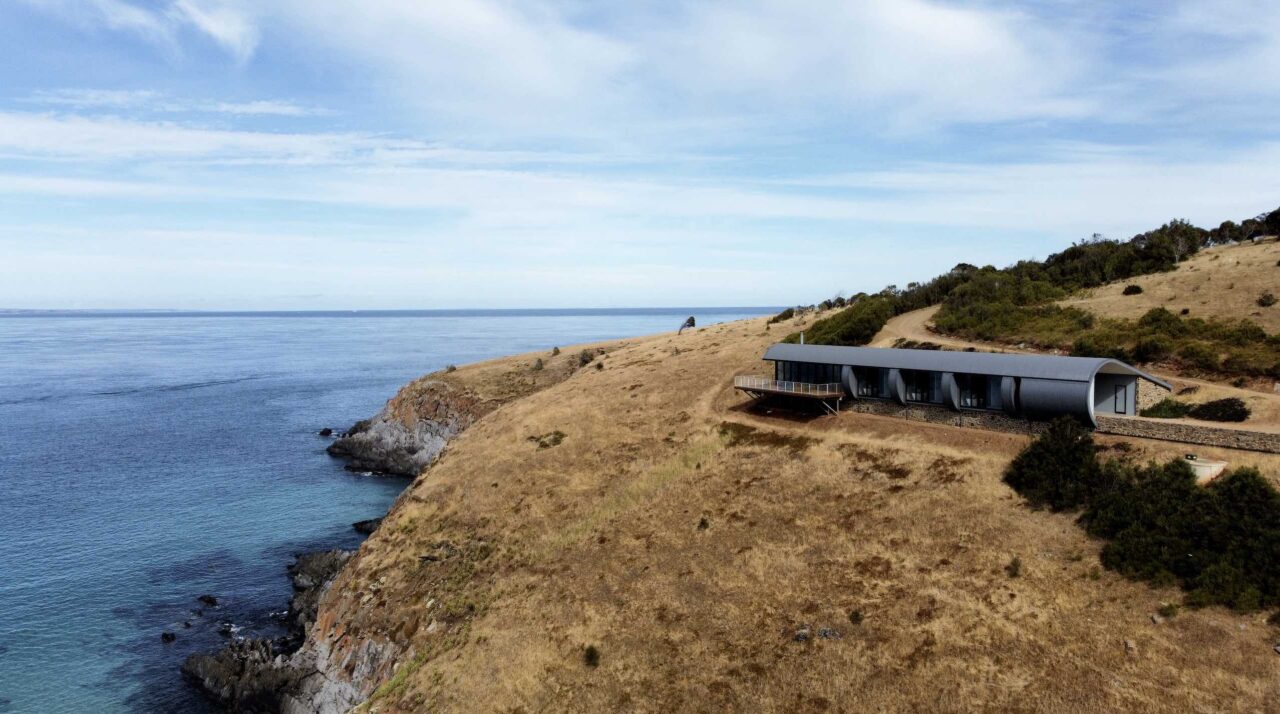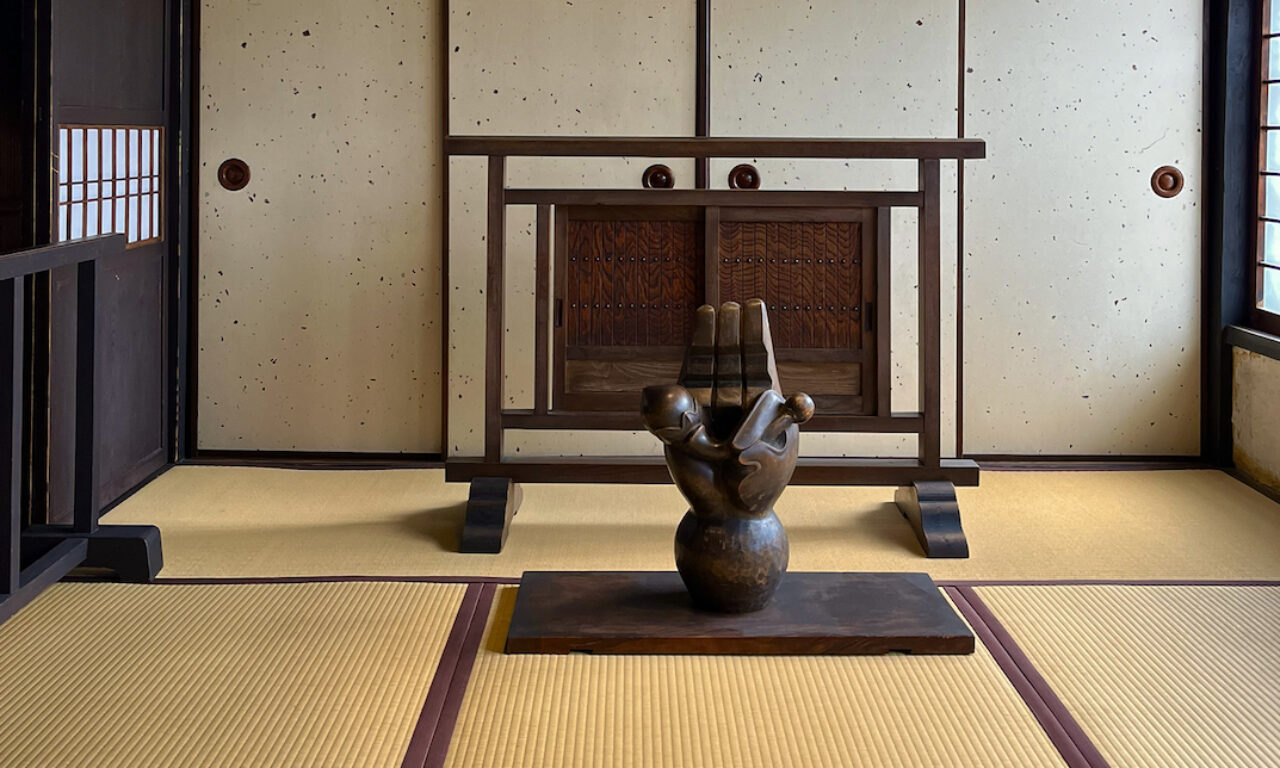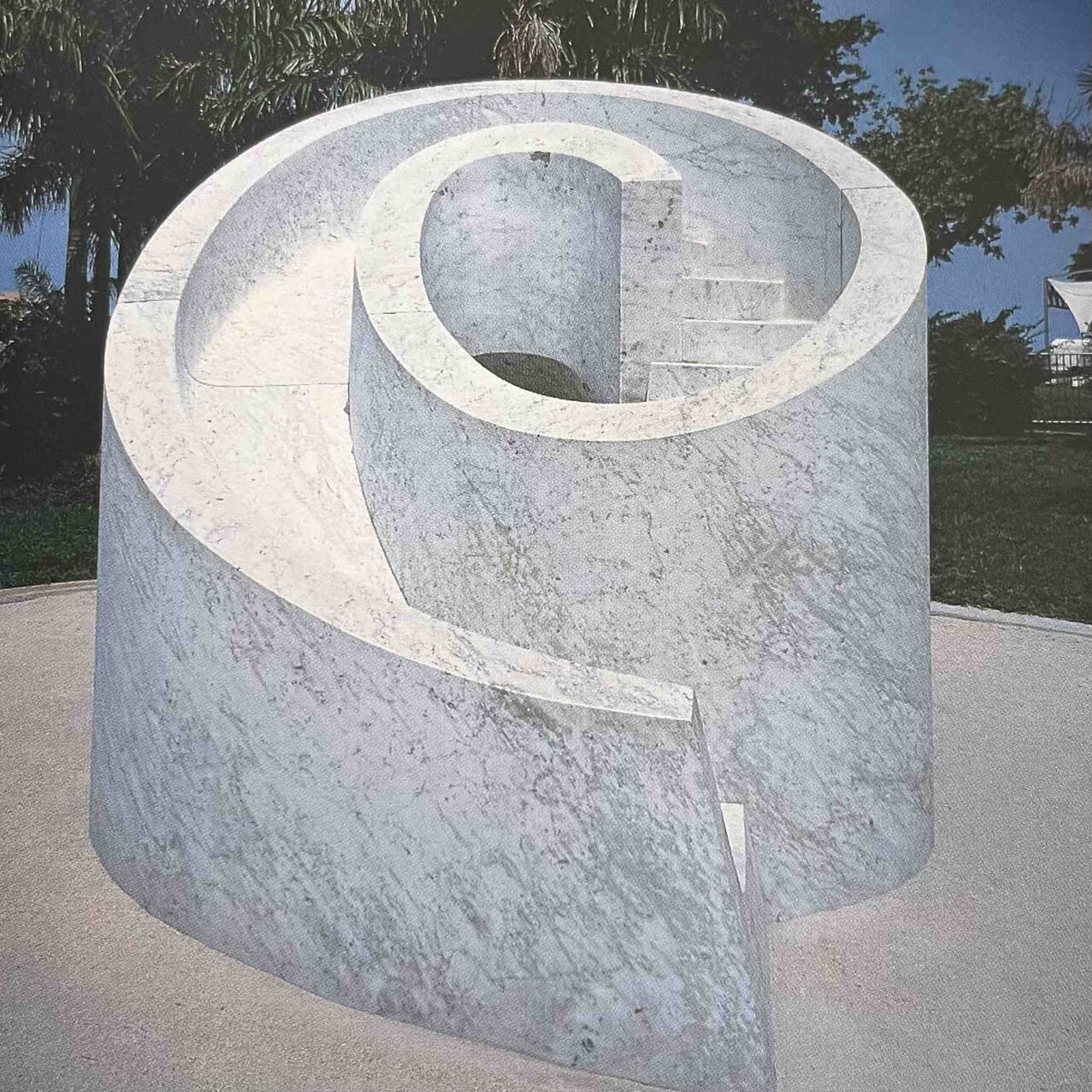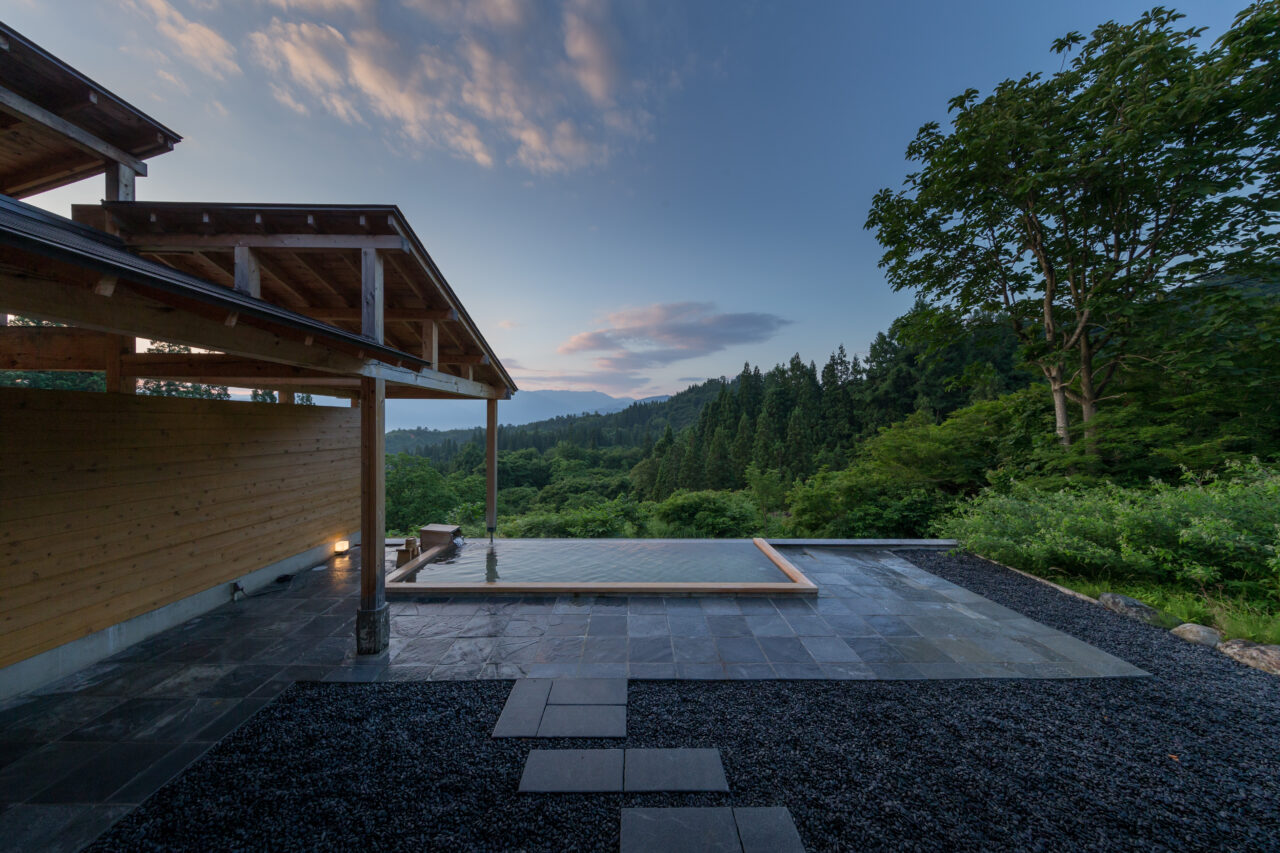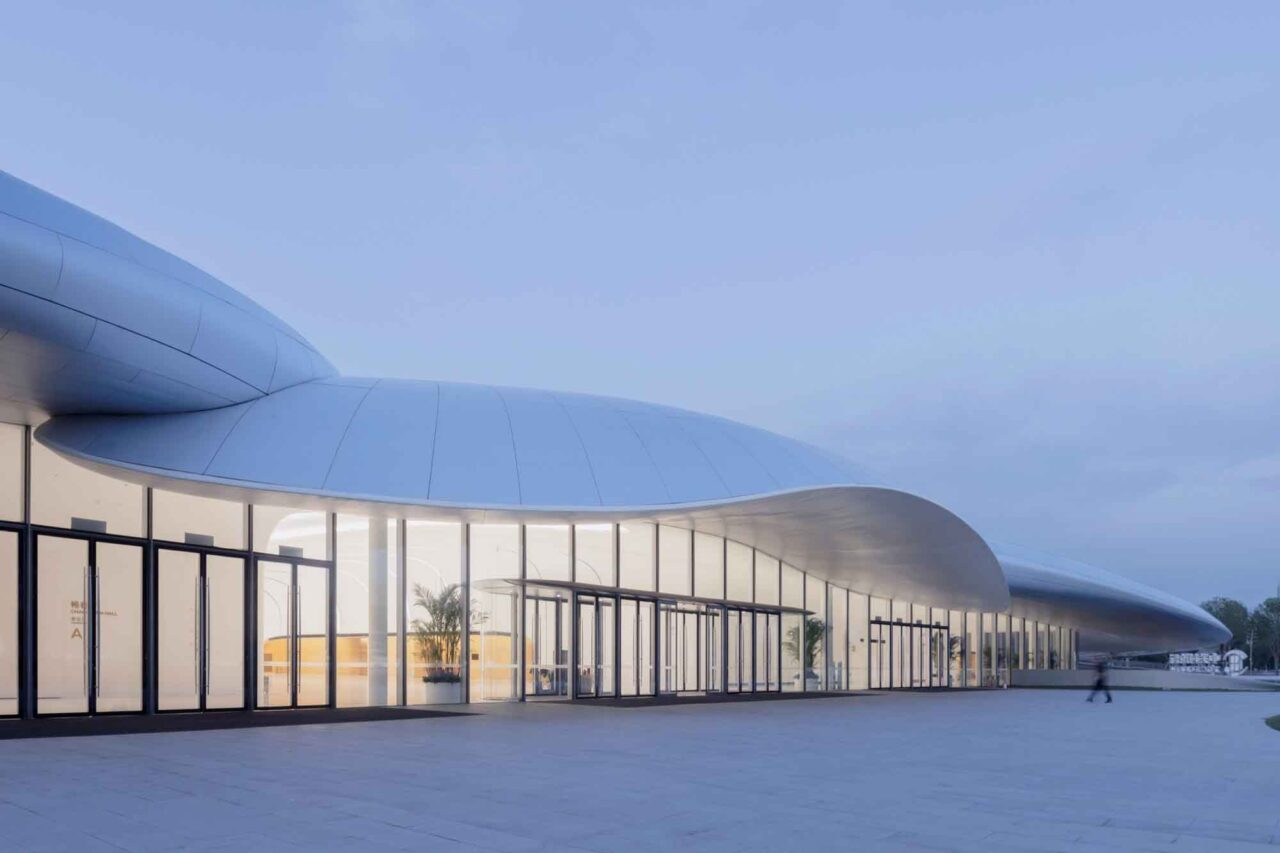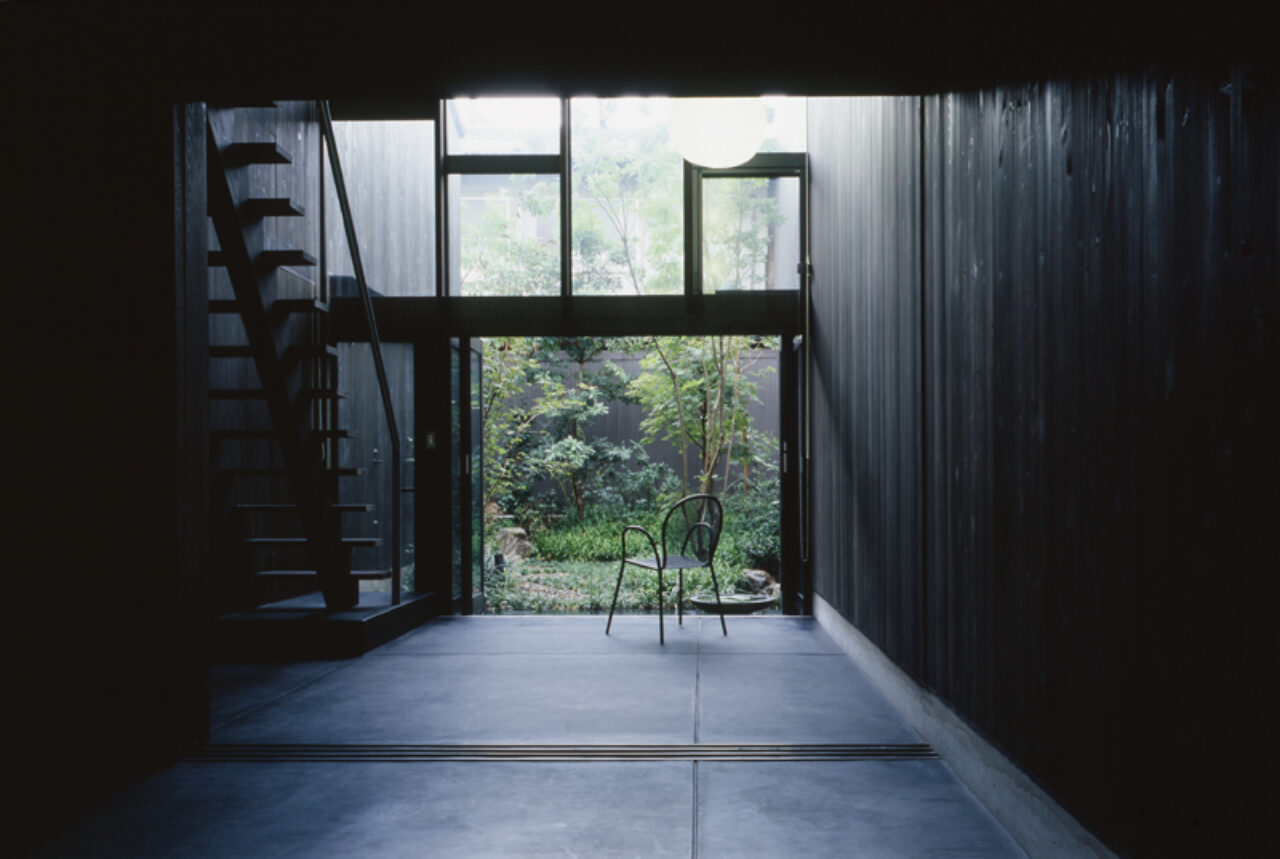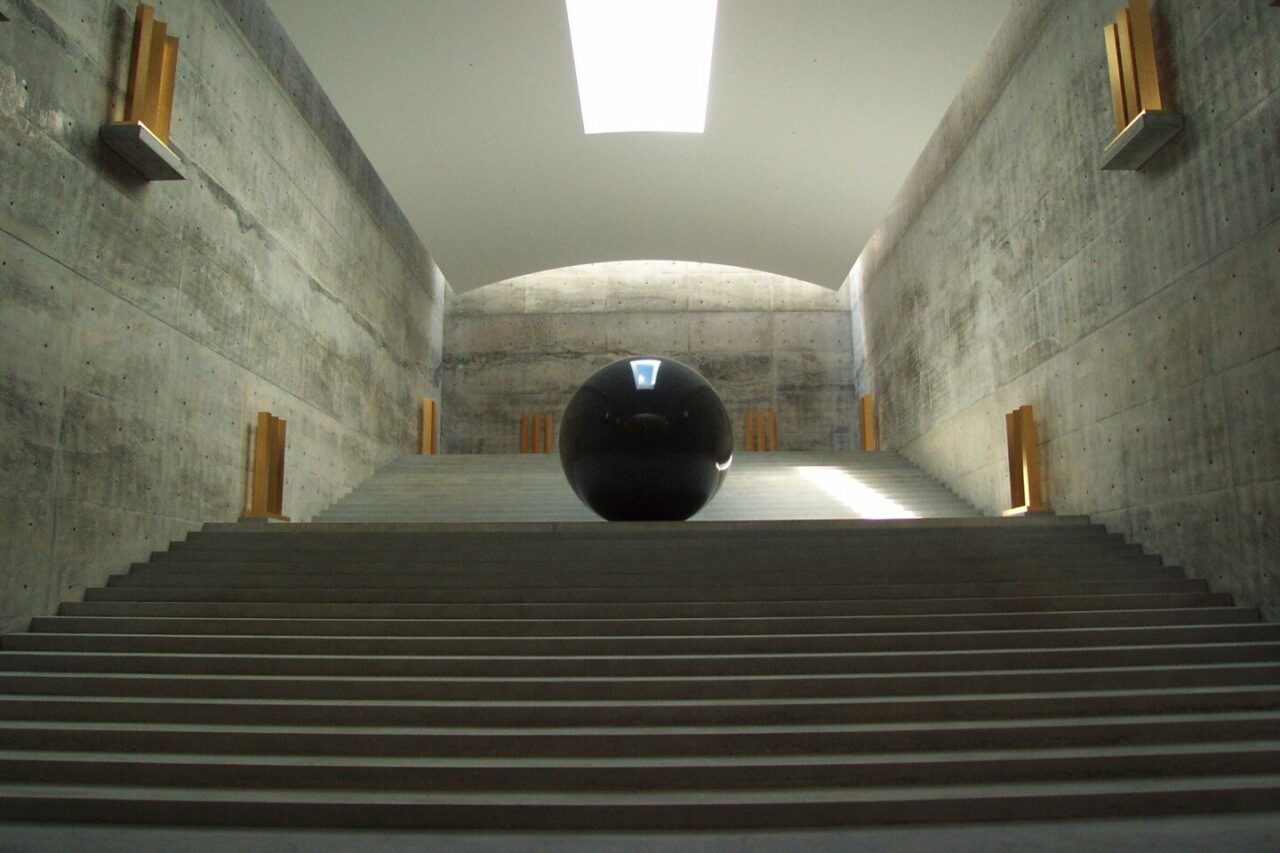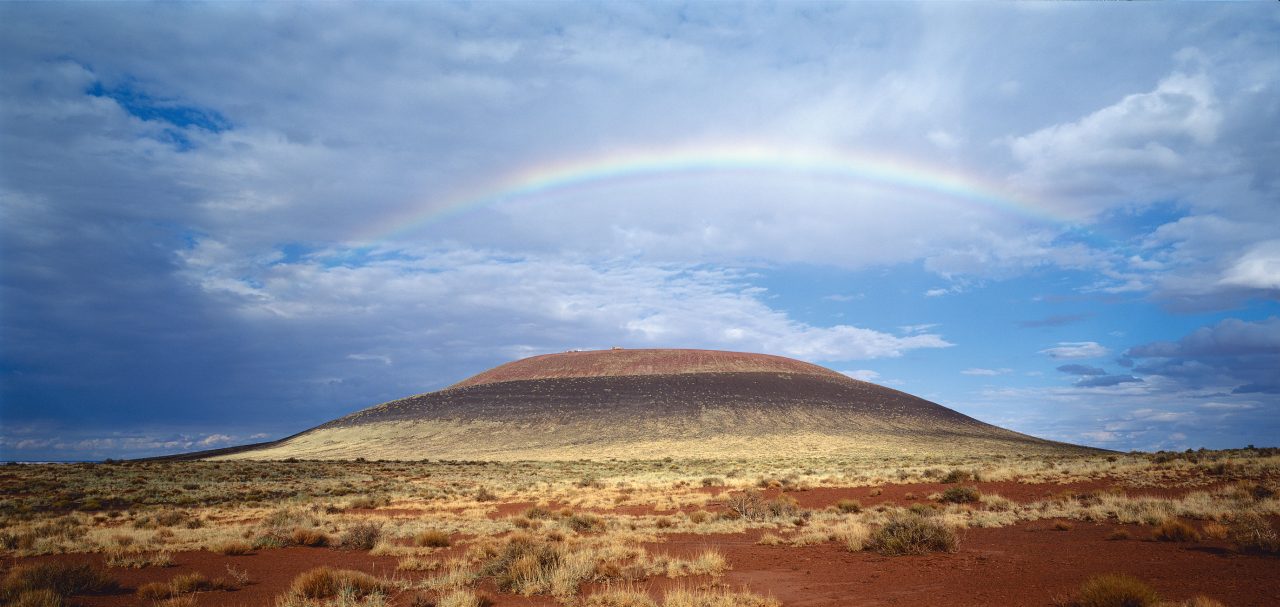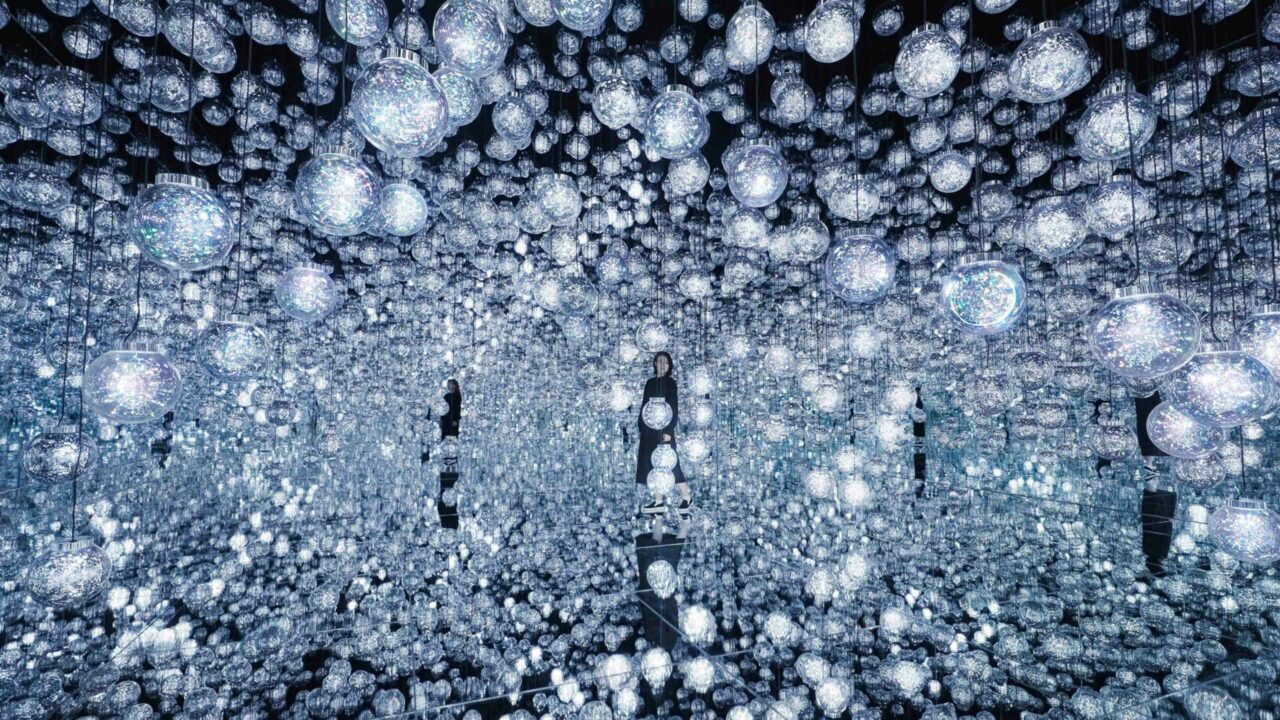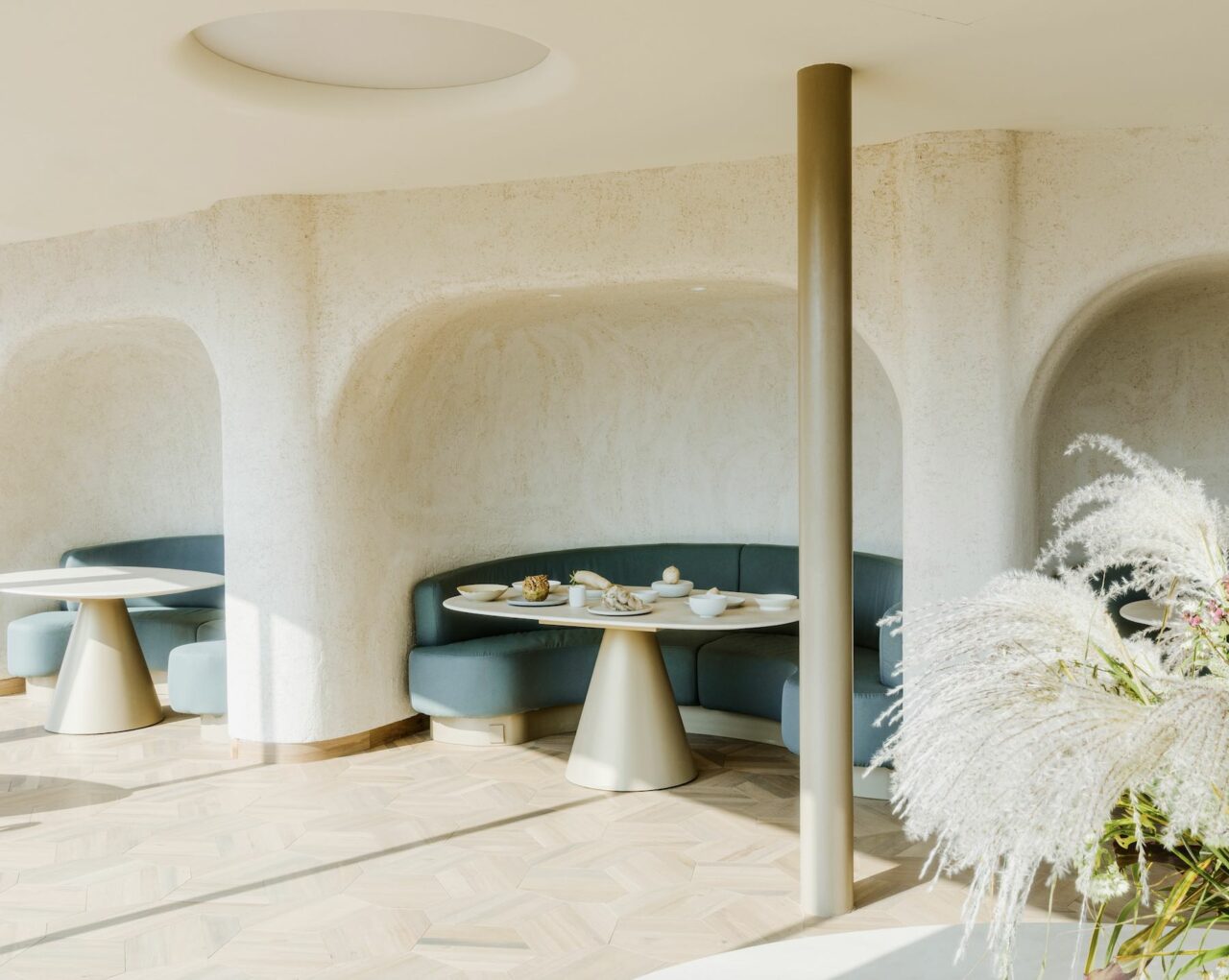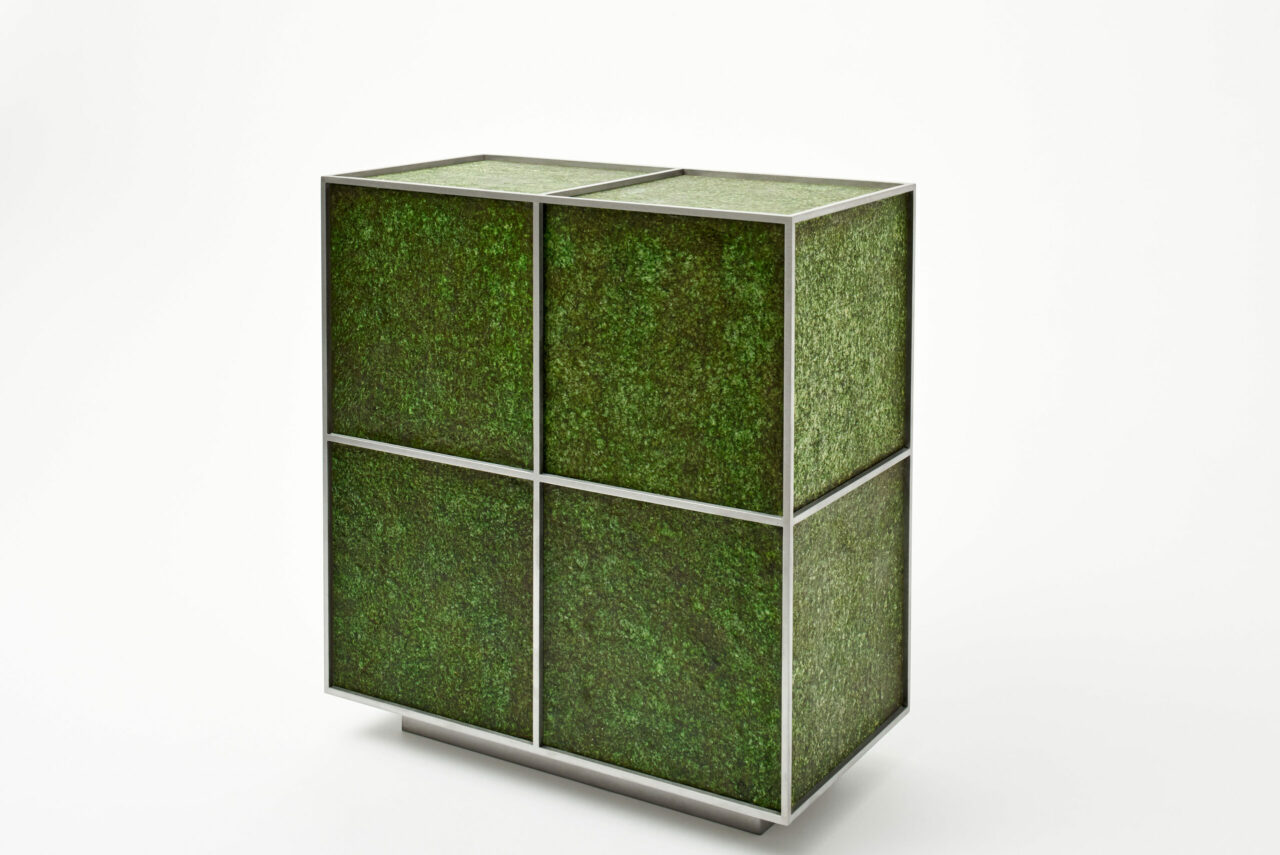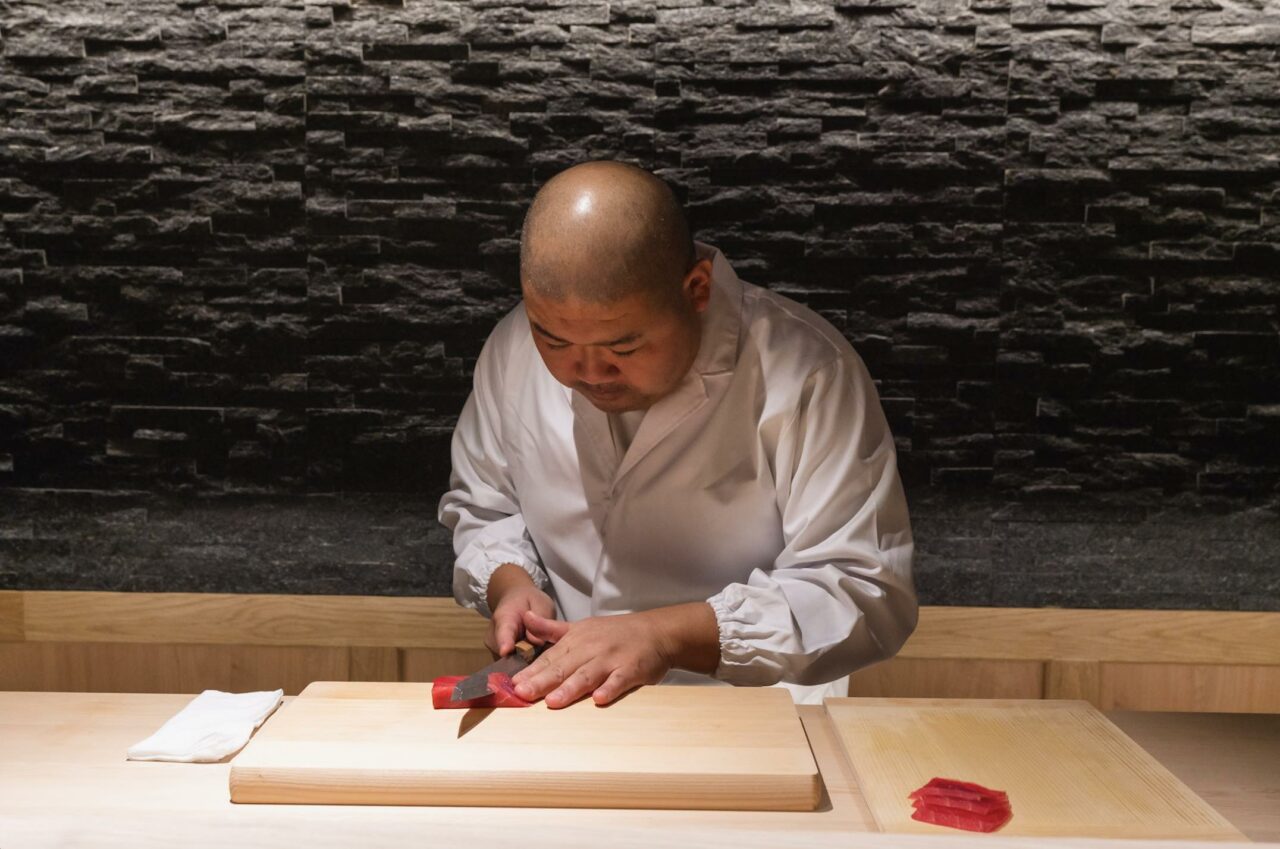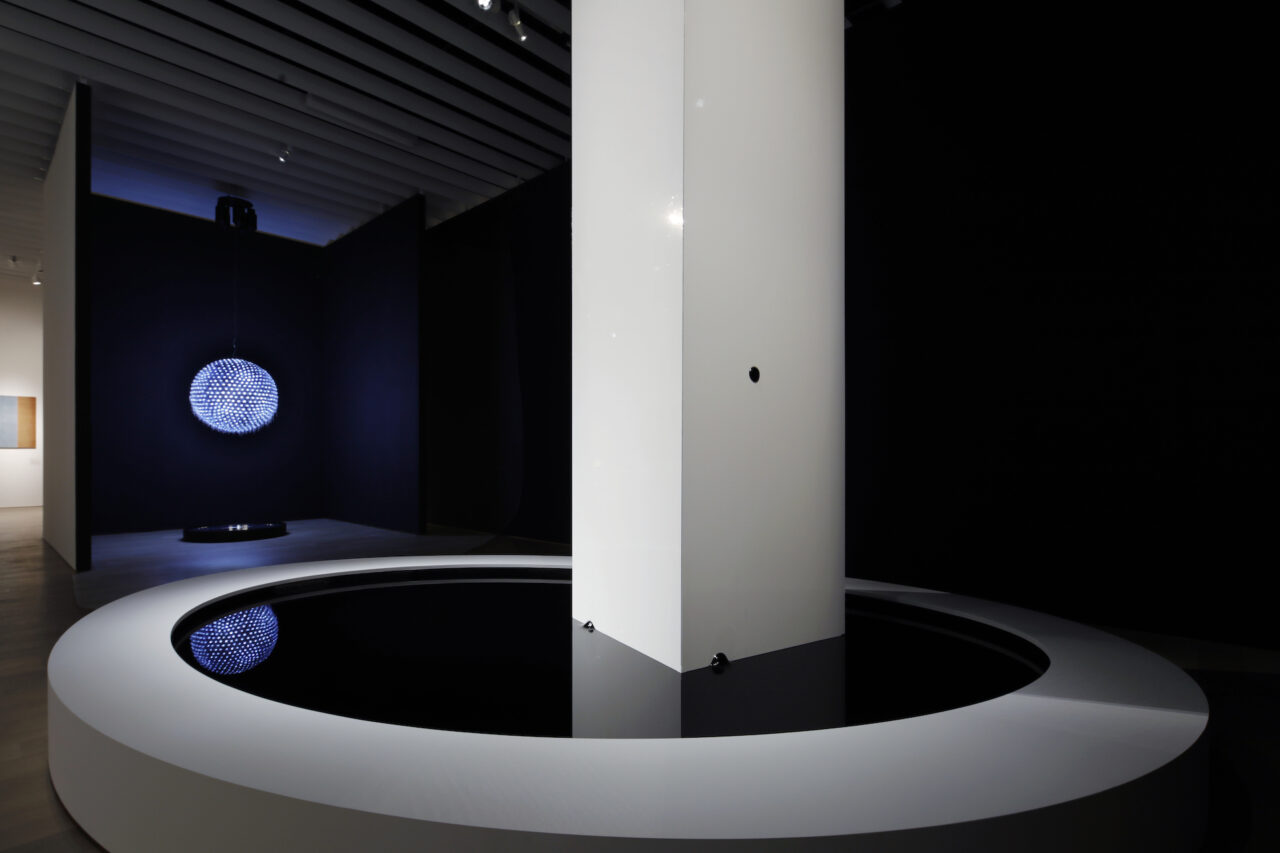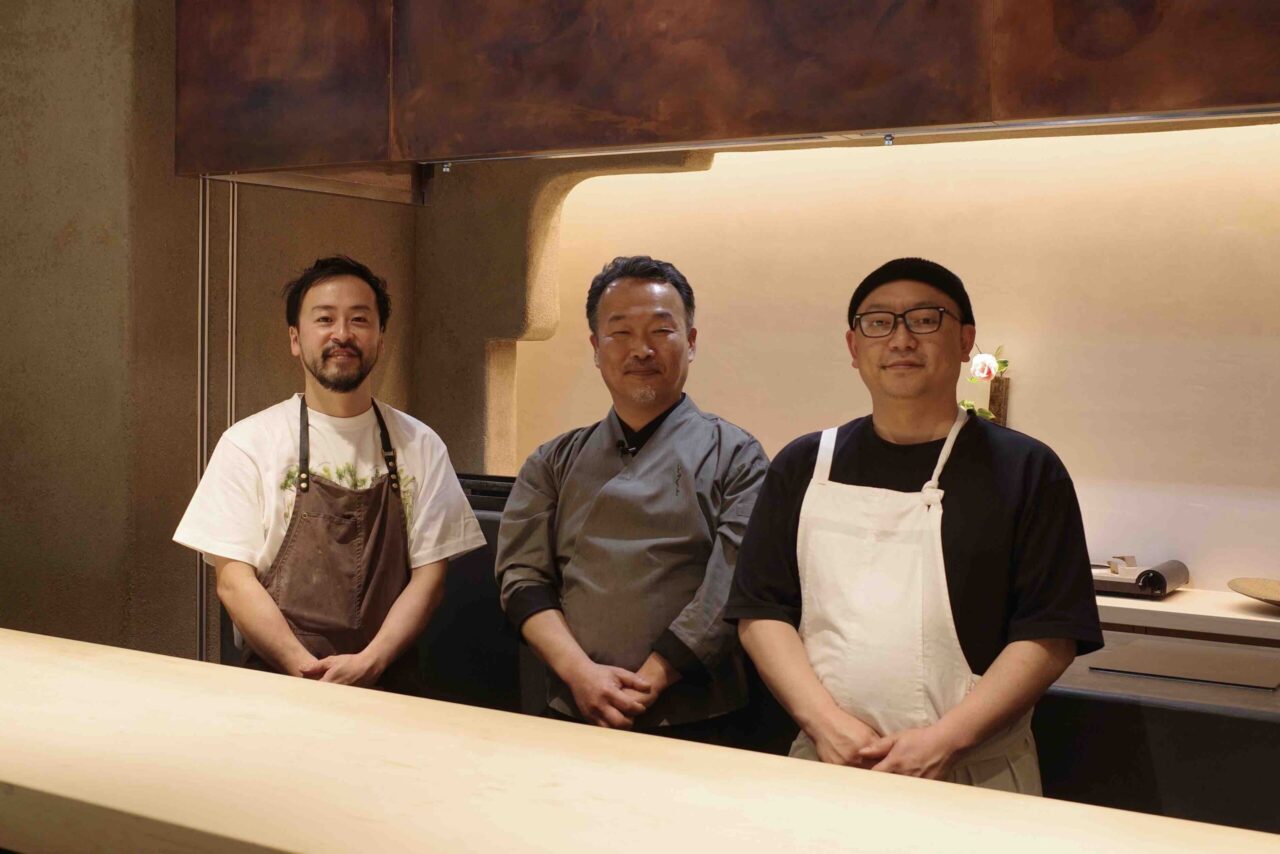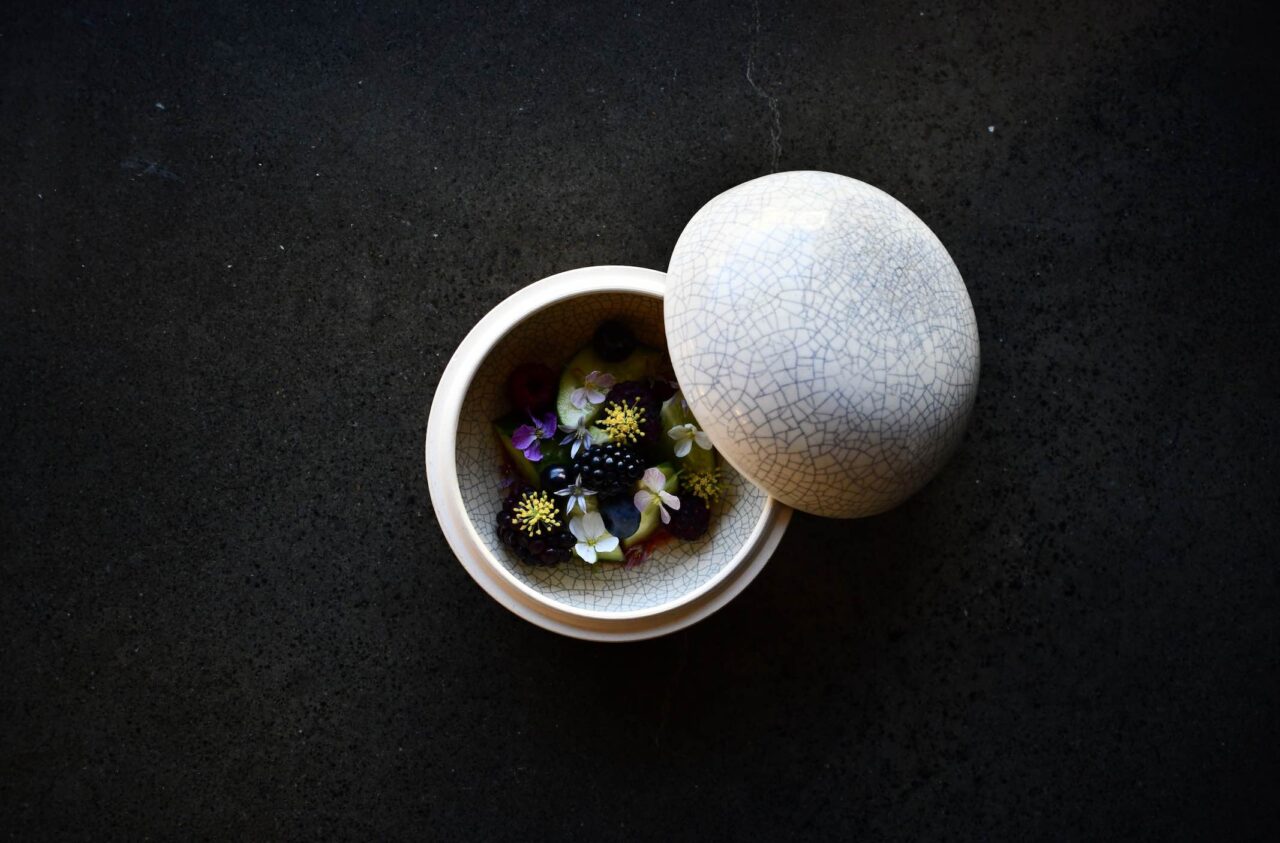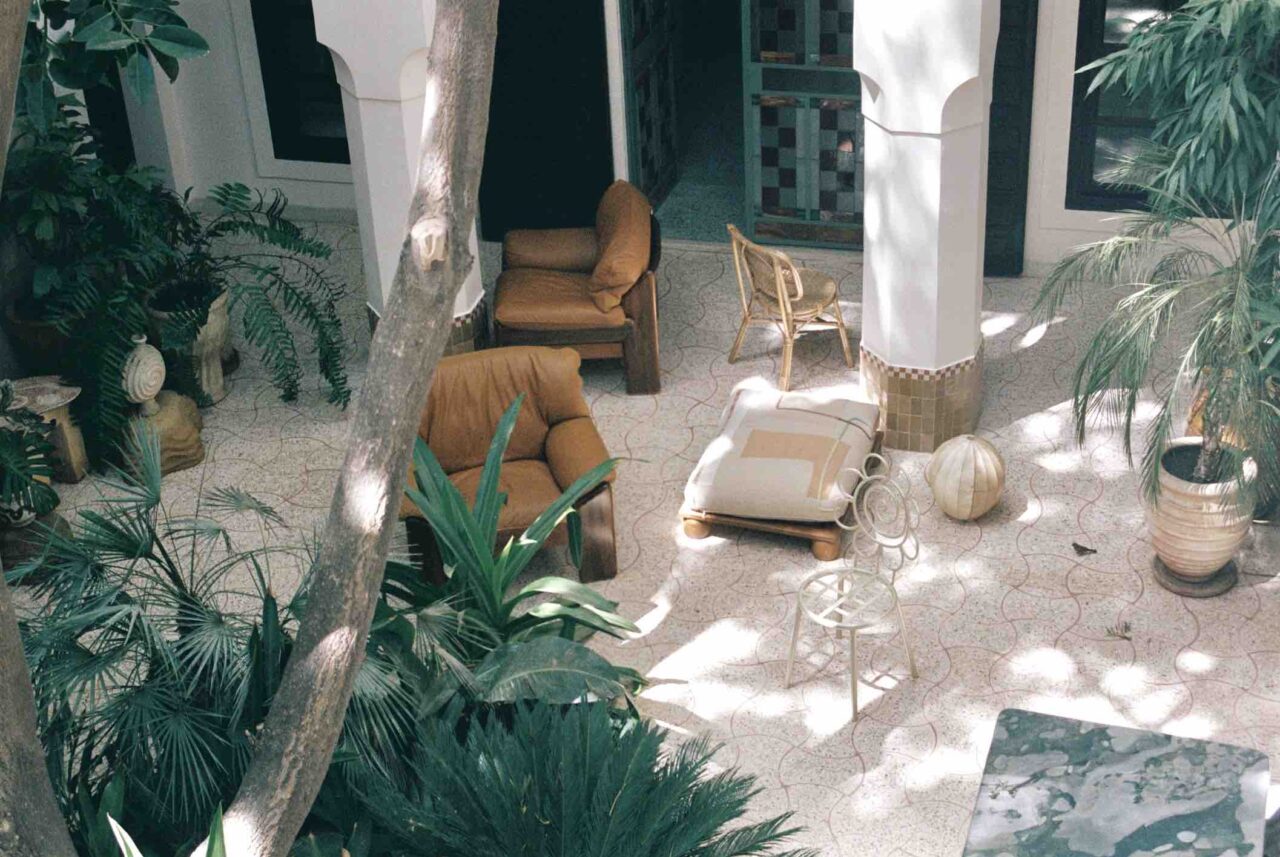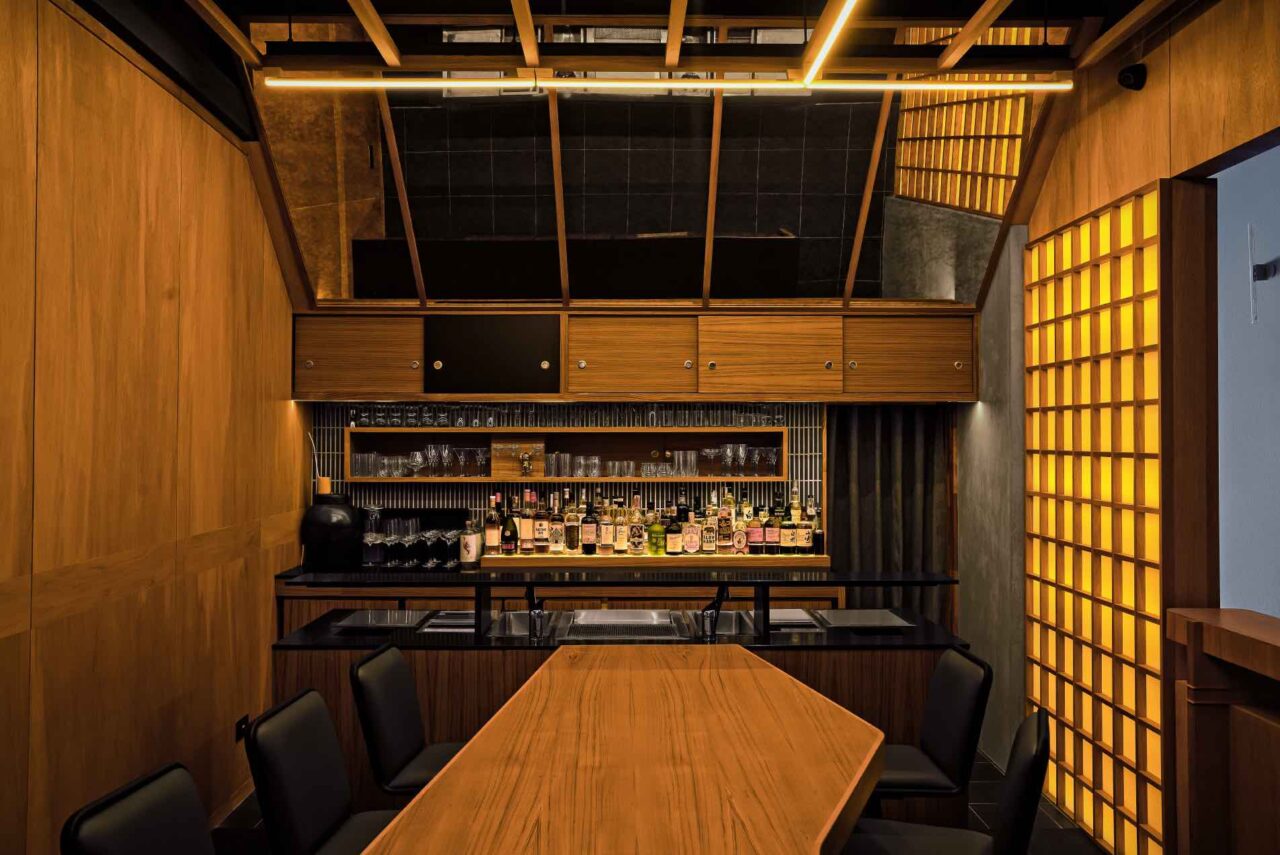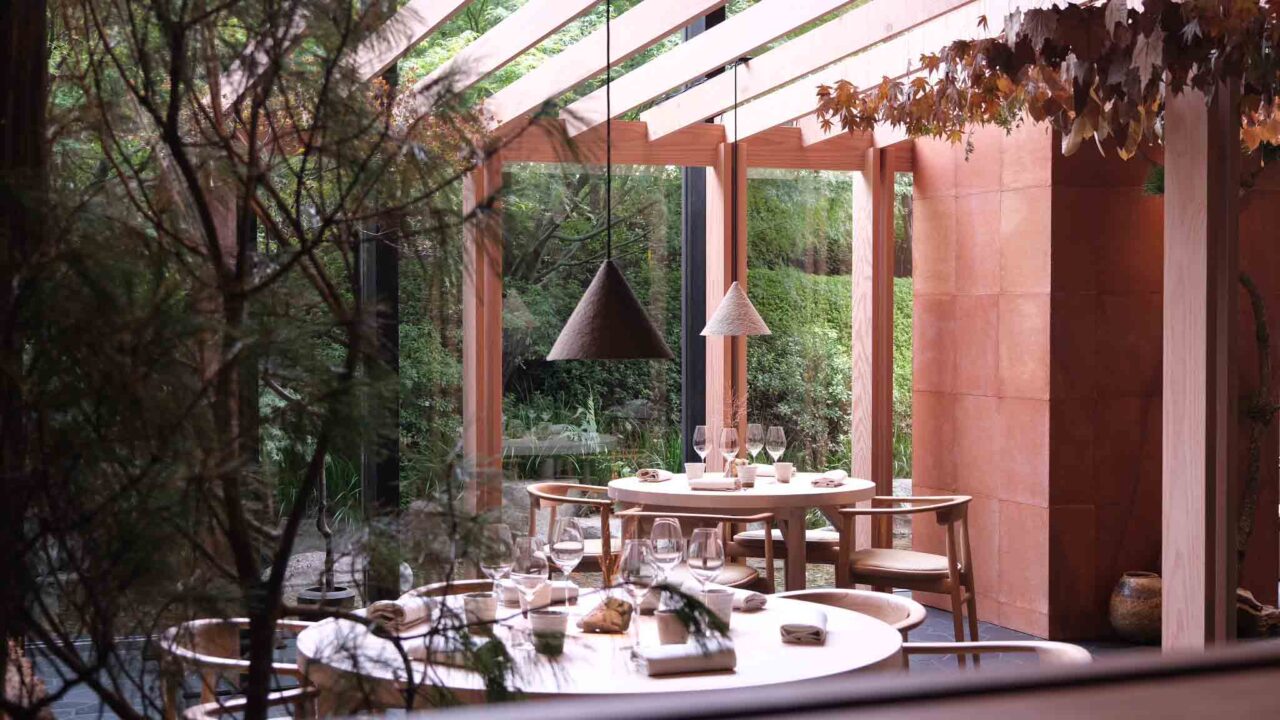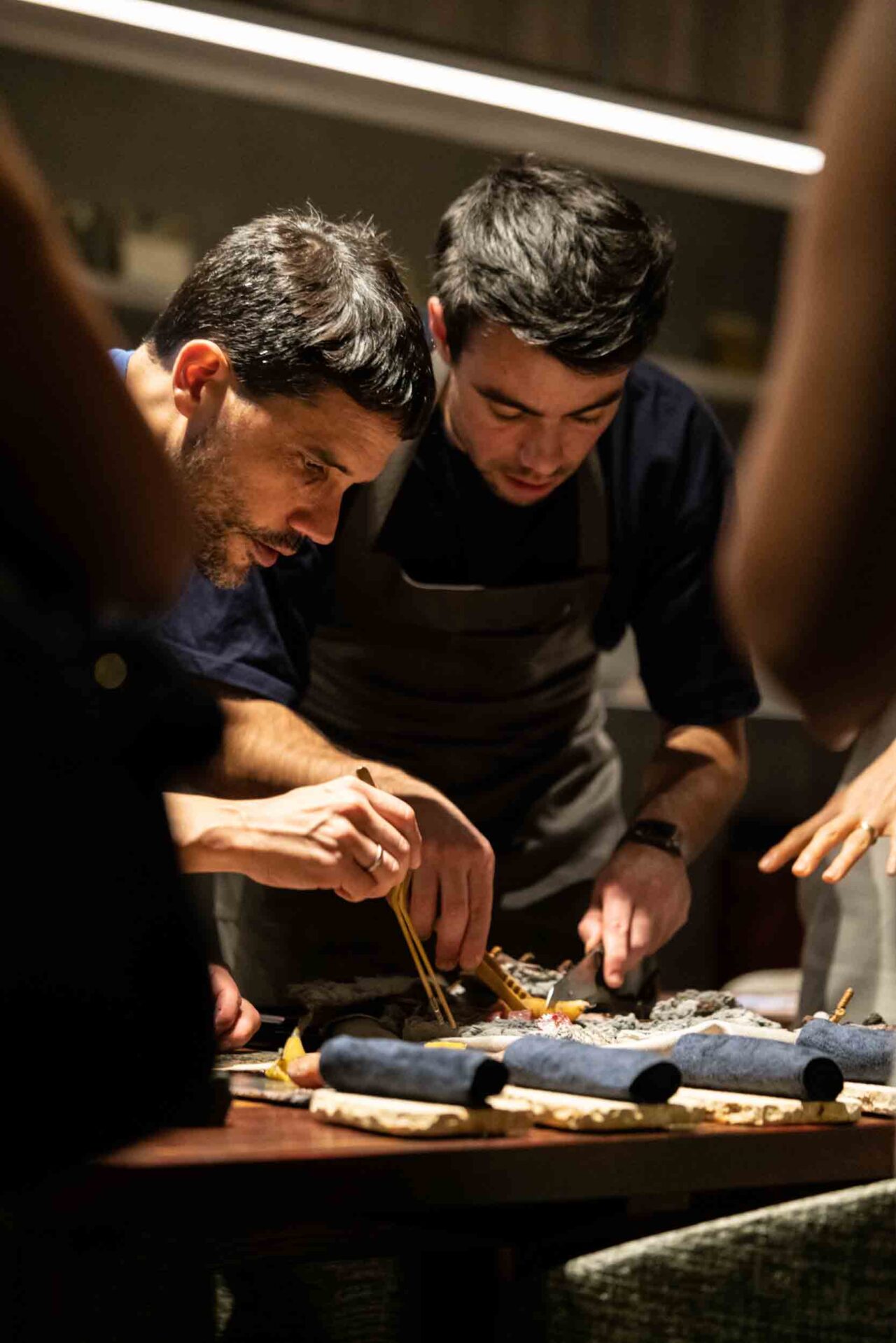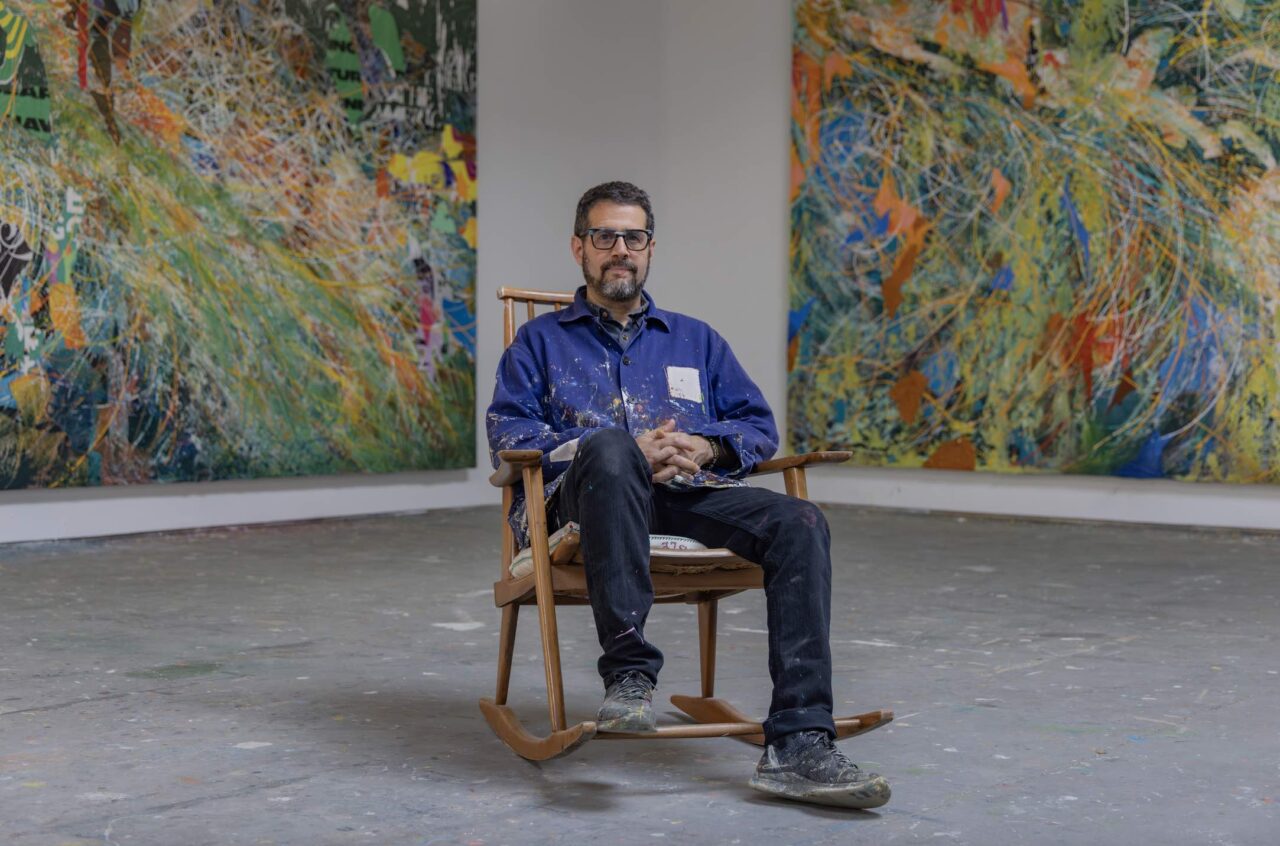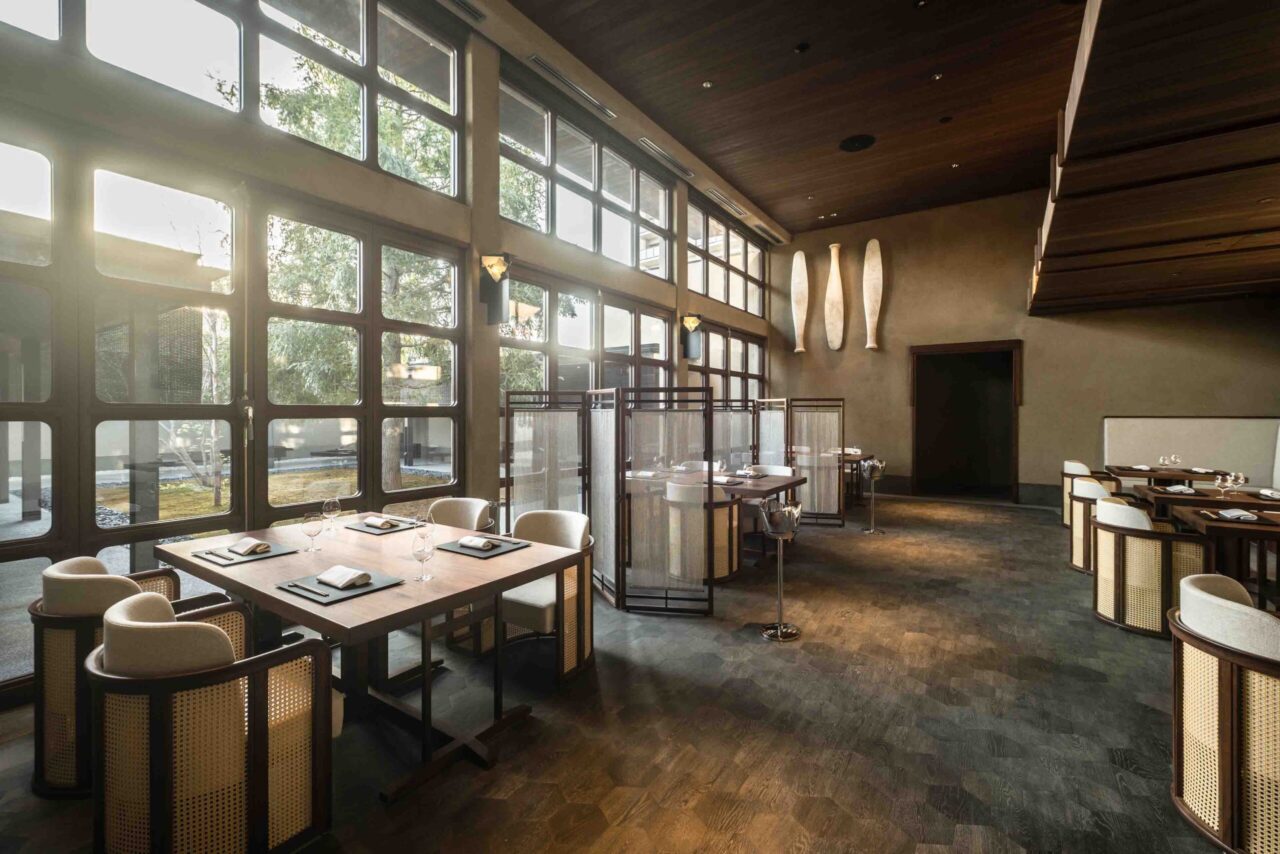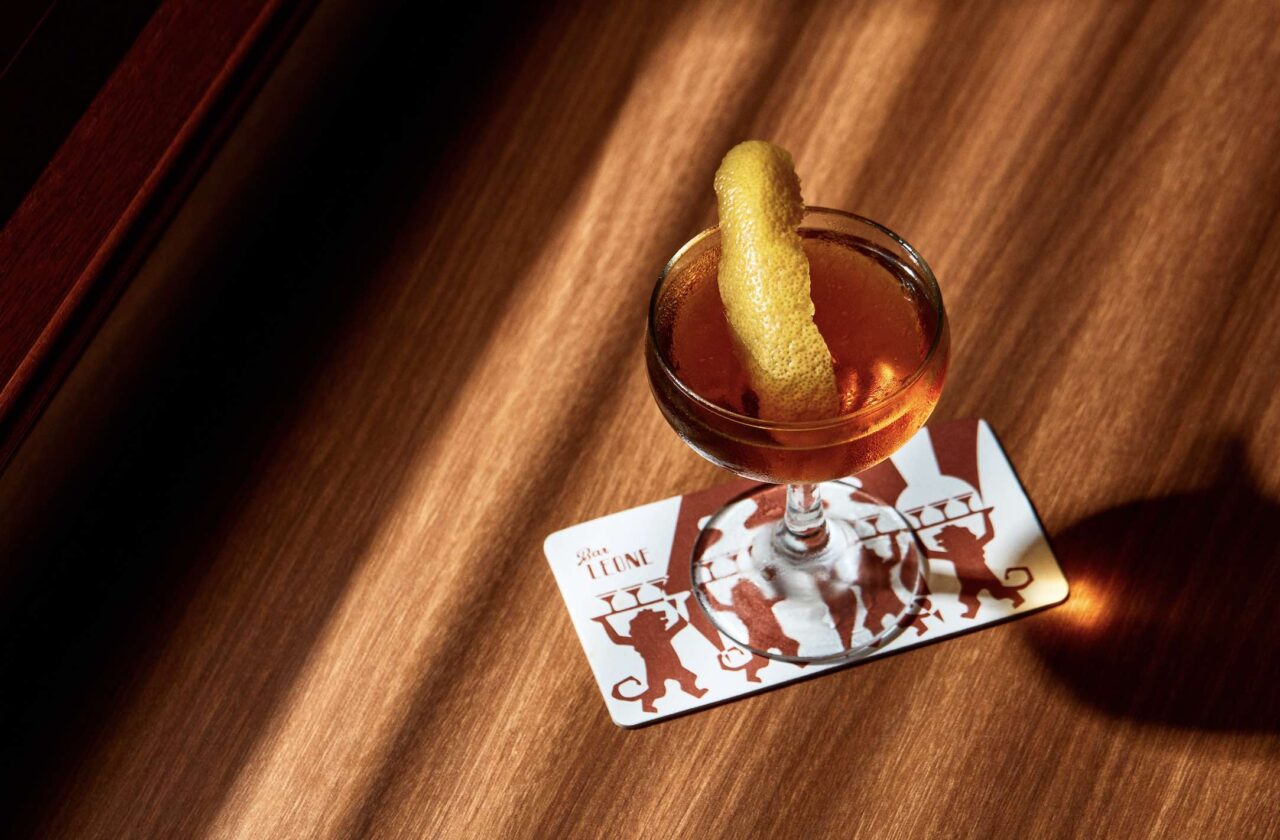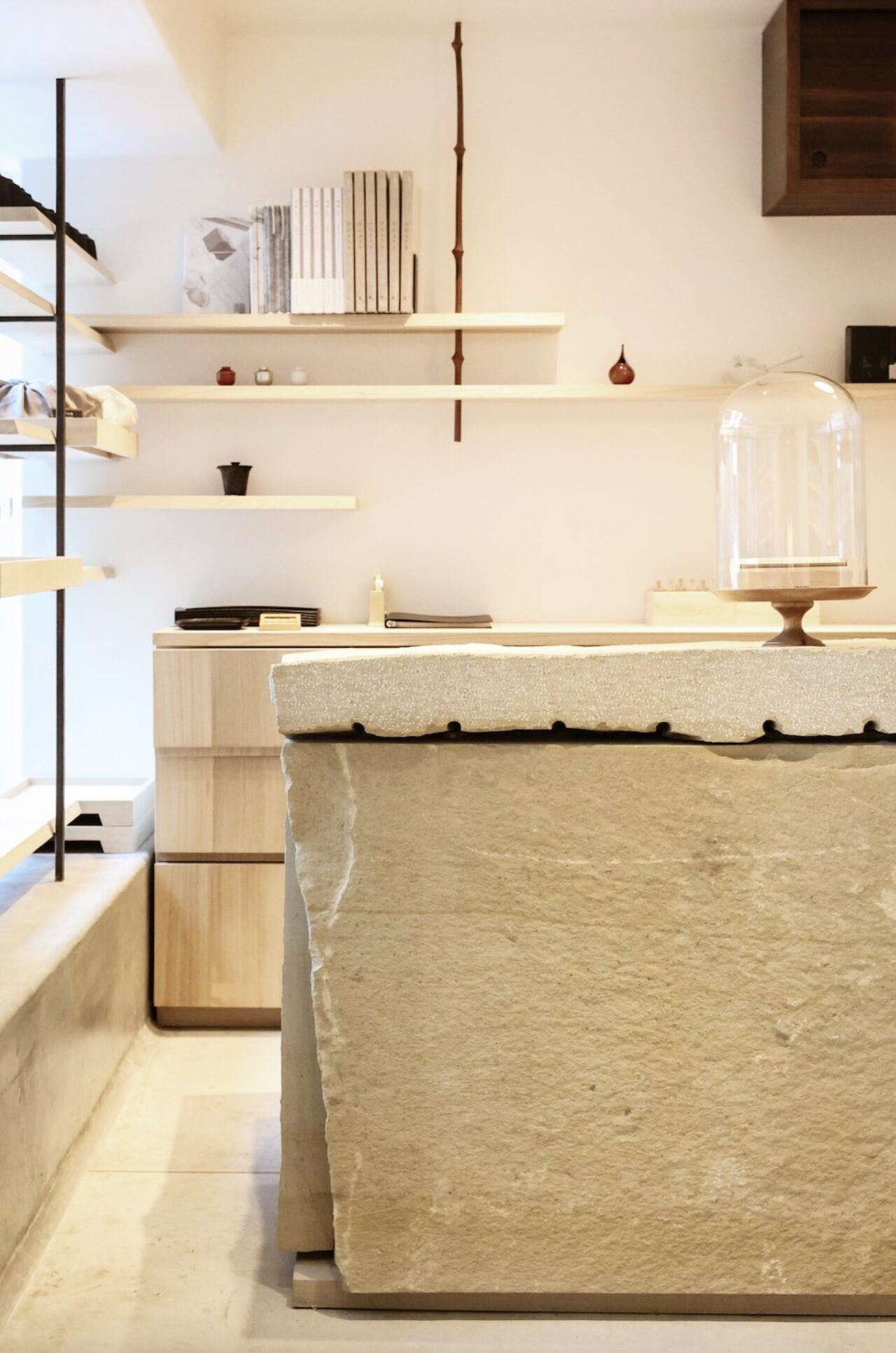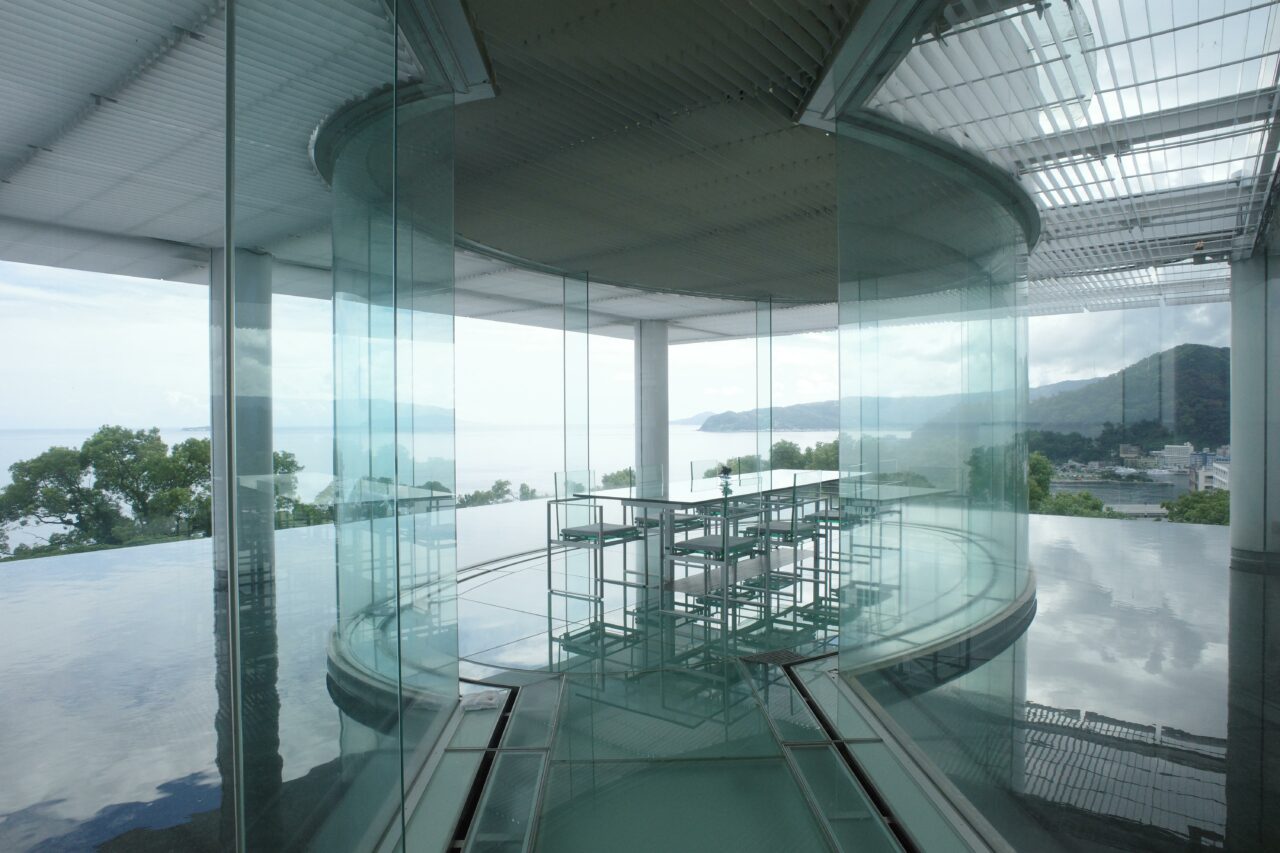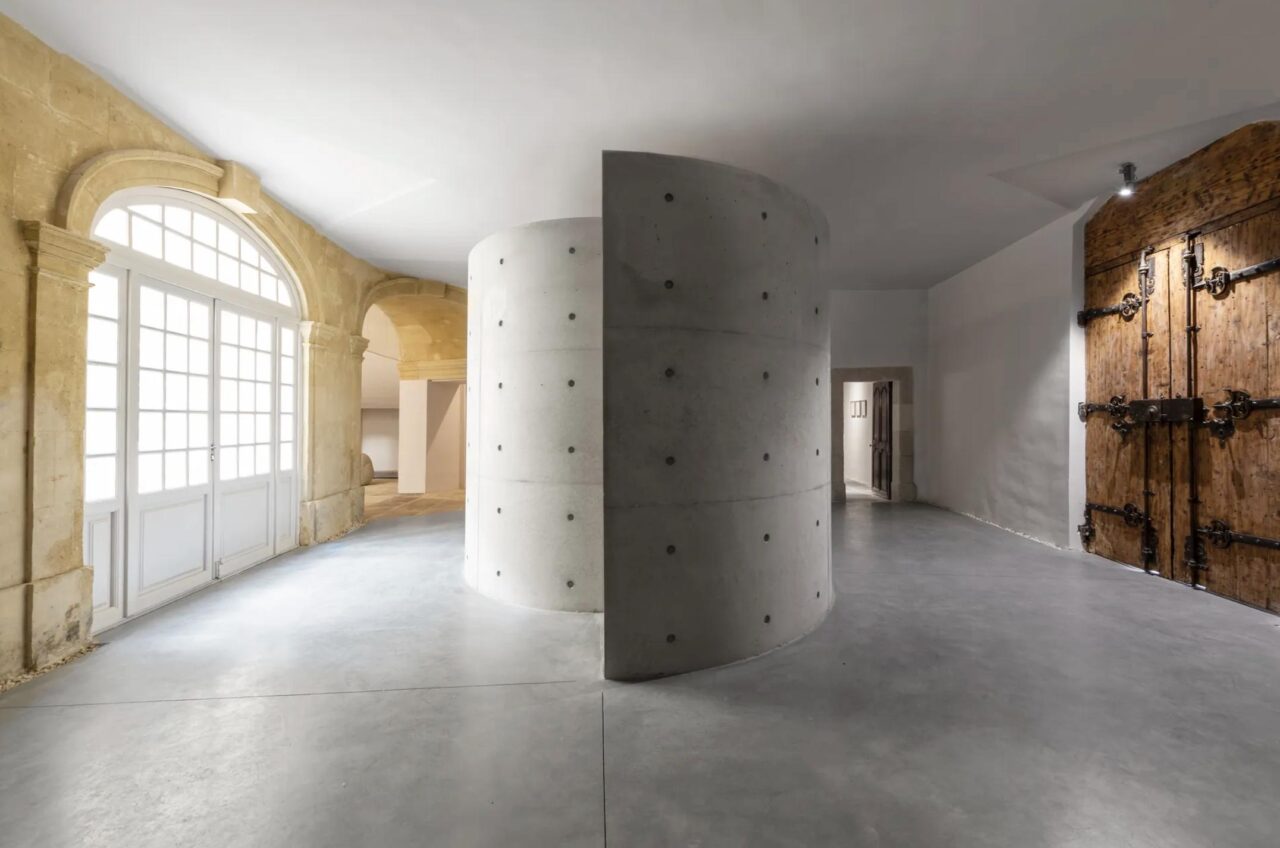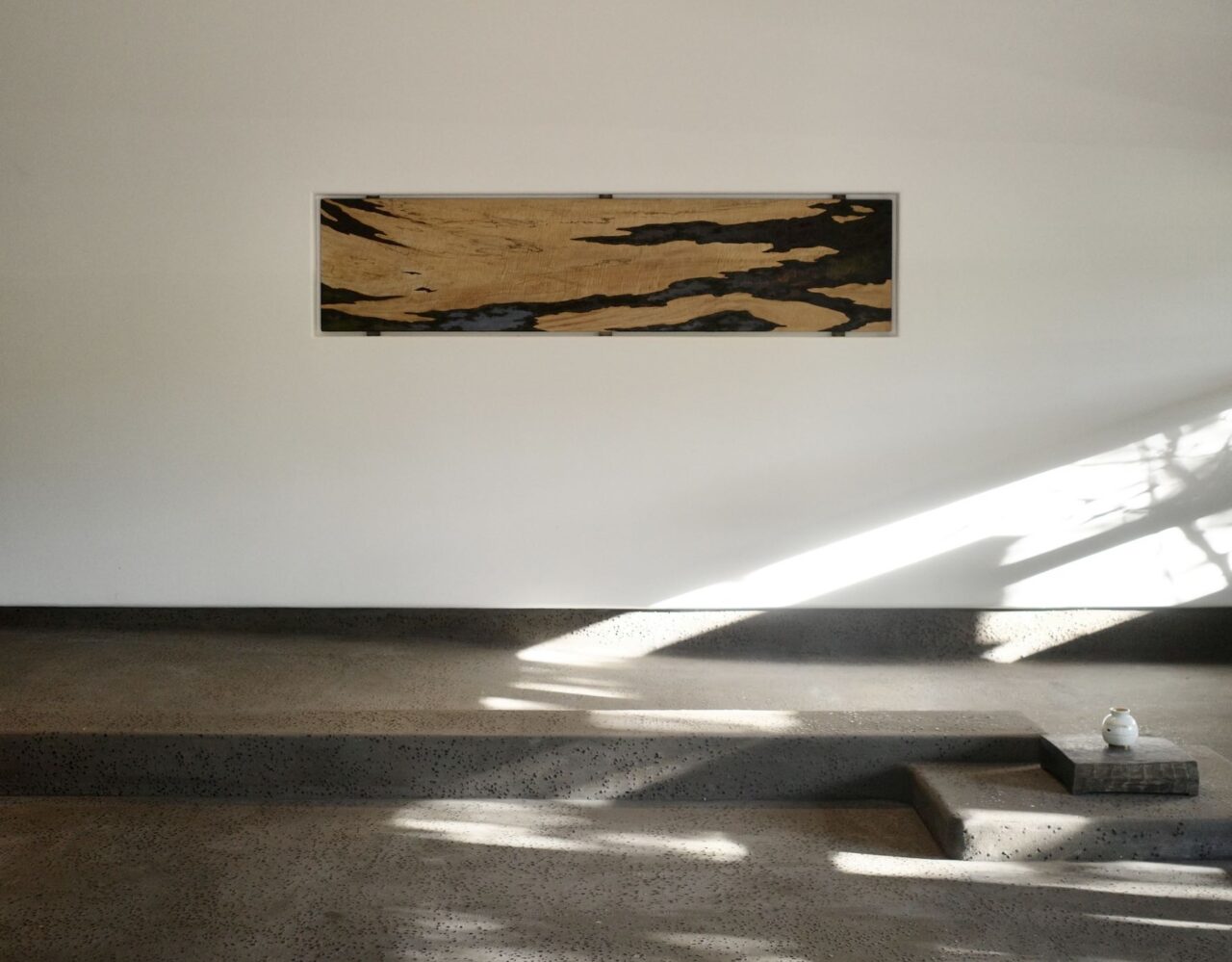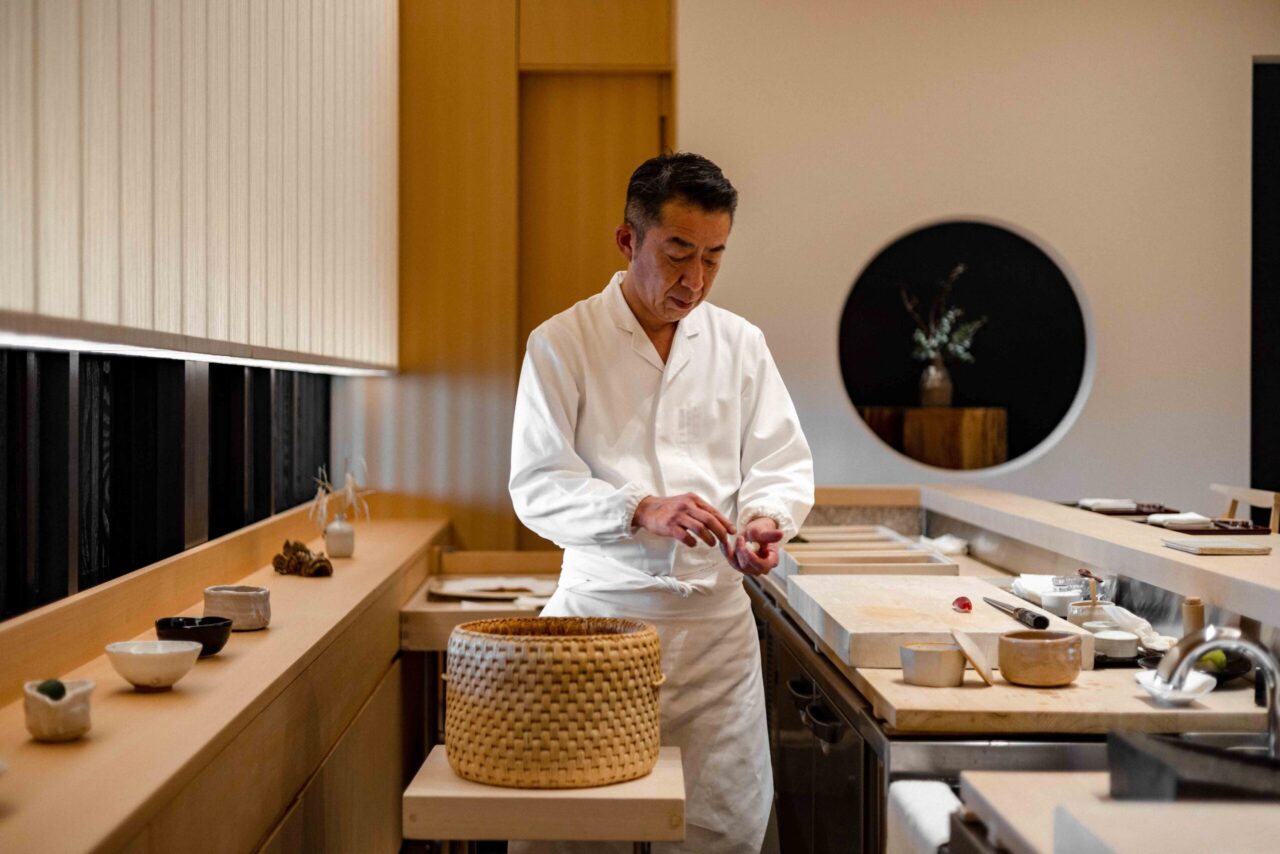TOKITO X NOTO PENINSULA
The Future of Noto — Connecting Through the Power of Food
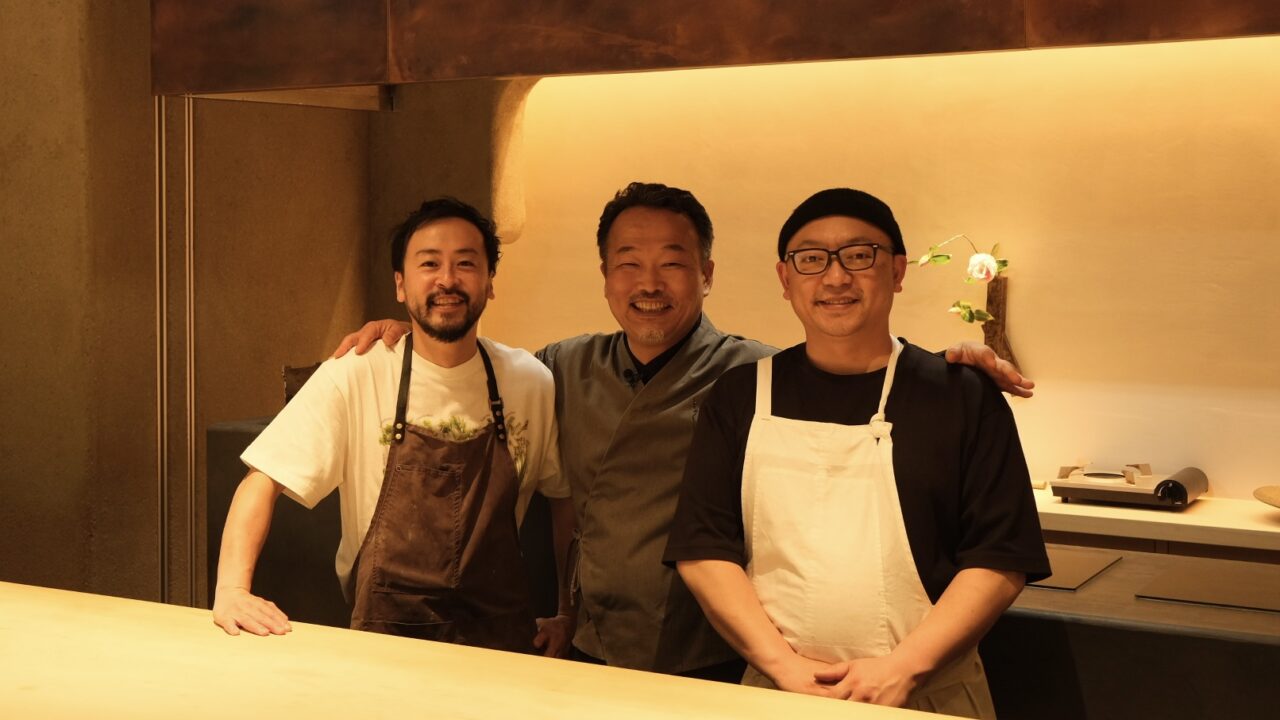
To refer to Executive Chef Yoshinori Ishii of Auberge TOKITO — an exceptional restaurant and boutique hotel located in Tachikawa within the outskirts of central Tokyo — as a culinary wunderkind is no understatement. Not only an exceptionally talented chef, his innate passion for communicating the beauty of Japanese cuisine to the world sees a unique universal language crossing boundaries of culture, deeply connecting wider communities.
For the auberge and restaurant’s 2nd anniversary, Executive Chef Ishii invited two leading chefs — Akira Hirata of Villa della Pace and Toshiya Ikehata of L’Atelier de Noto — from Japan’s Noto Peninsula, a small coastal region abundant in natural culinary resources that was notably heavily affected during a large earthquake in January of 2024. The Noto peninsula projects north into the Sea of Japan from the coast of Ishikawa Prefecture in central Honshū, providing perfect conditions for high quality seafood or wild vegetables to grow, yet whilst the region was devastated, it continues to gradually rebuild its local economy.
The key message of the uplifting collaborative dining event was simply, HERE. NOW. As the local region begins to recover, now is the time to visit again, and they eagerly encourage and anticipate guests and visitors.
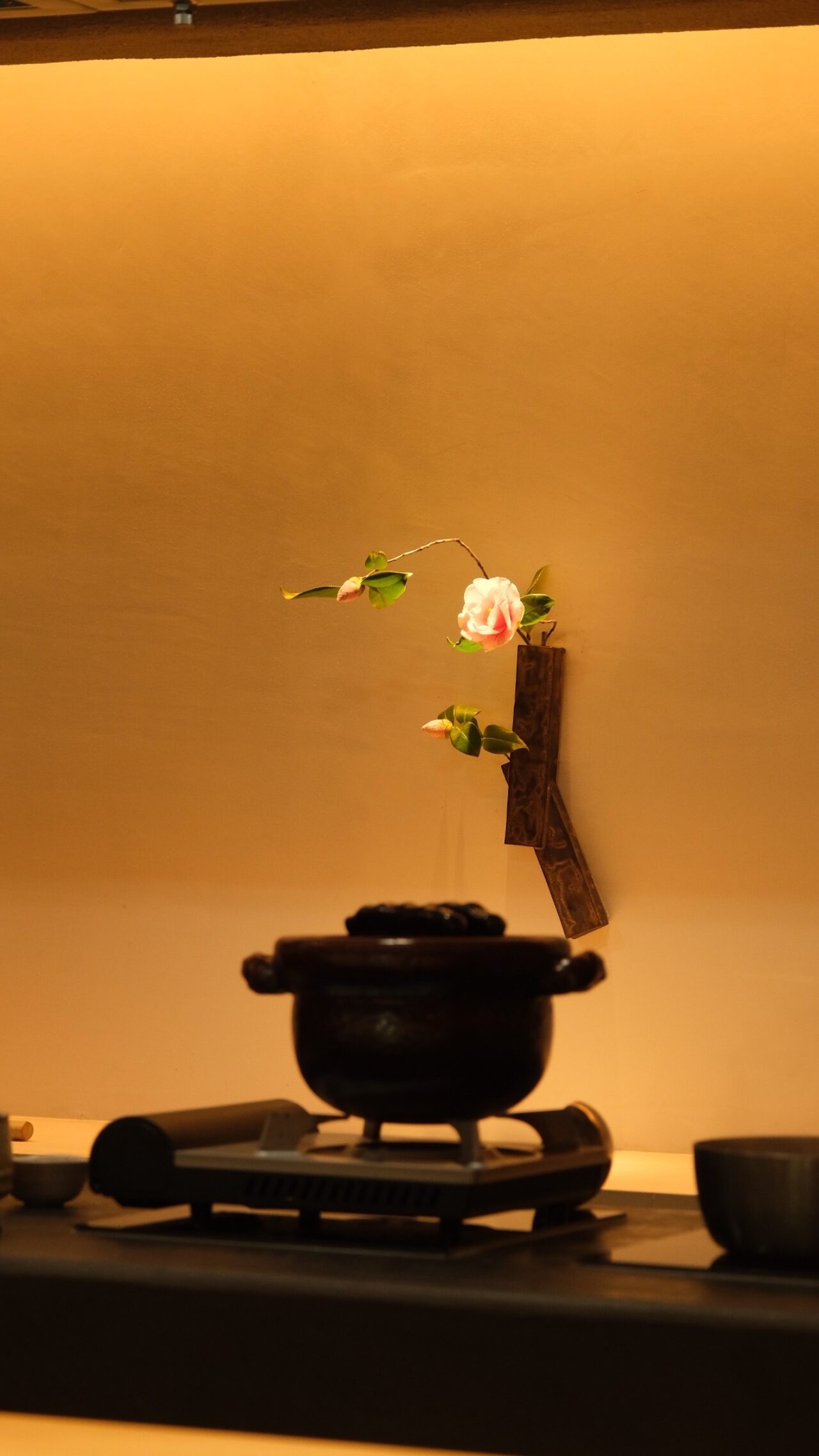
The three chefs, whilst being located in two completely contrasting regions, are perfectly aligned in similar values and culinary ethos. They each share the same passion and earnest integrity and respect for ingredients, producers and nature — closely interacting with suppliers. Chef Ishii famously pioneered the ikejime method in the UK, whilst chef Ikehata has held workshops in Noto to teach fishermen better processing techniques and works with a local ranch to utilise undesirable yet quality meat and dairy resources that would otherwise be discarded. Chef Hirata thrives on the abundance of his locale; foraging edible wild mushrooms and plants, growing his own vegetables and holding deep dialogues with local fishermen.
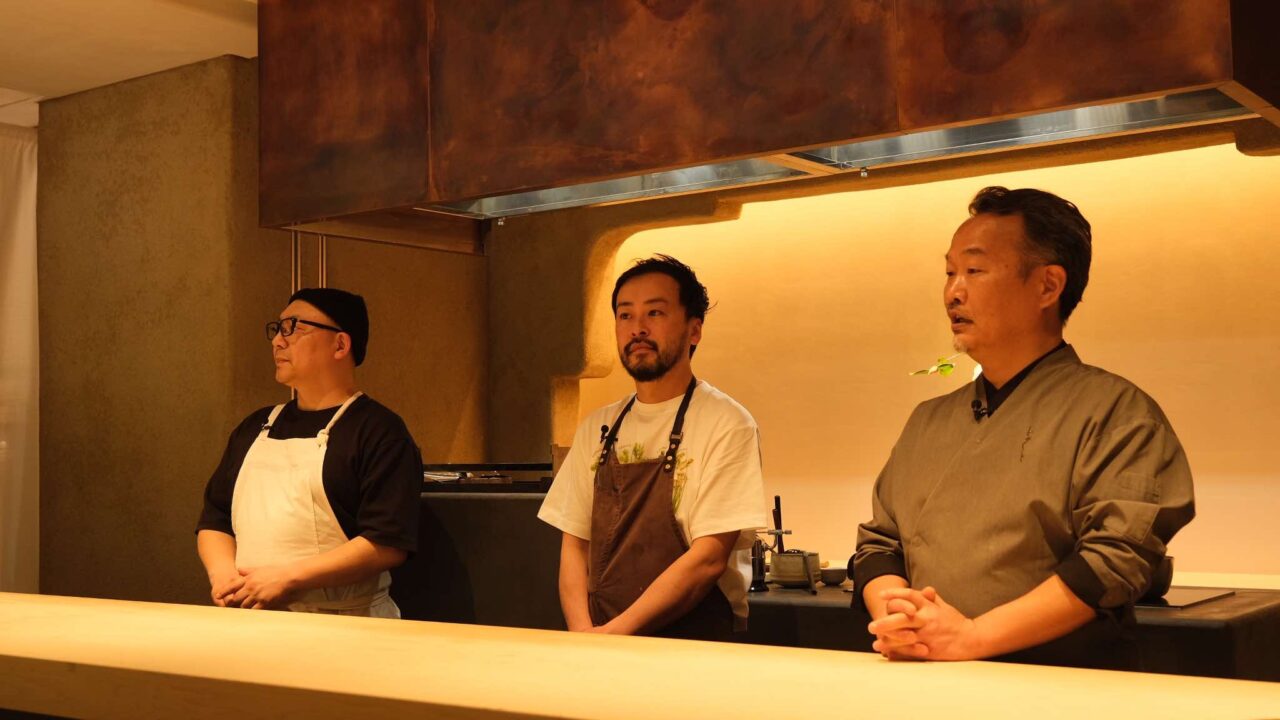
At Tokyo’s Auberge TOKITO, the dining event started with three big smiles, eager to interweave the talents of each chef and beauty of the Noto Pensinsula.
The course menu heavily celebrated seasonality and locality, starting with an appetiser of three delicate dishes. As one of chef Hirata’s signature dishes, a ‘bouquet from nature’, featured 12 kinds of wild leaves picked just days prior — was filled with miso and ricotta. Beside, two sashimi pieces of sayori (needlefish) was prepared by the kombujime technique used to enhance the taste of sashimi fish through ageing the fish between two sheets of kelp, and featured garnishes of cherry blossoms and kuromoji (spice bush) flowers. Centred between the two dishes, the third appetiser presented takenoko (bamboo shoot) with fugu (Japanese pufferfish) in a komekoji sauce with fugu fish eggs.
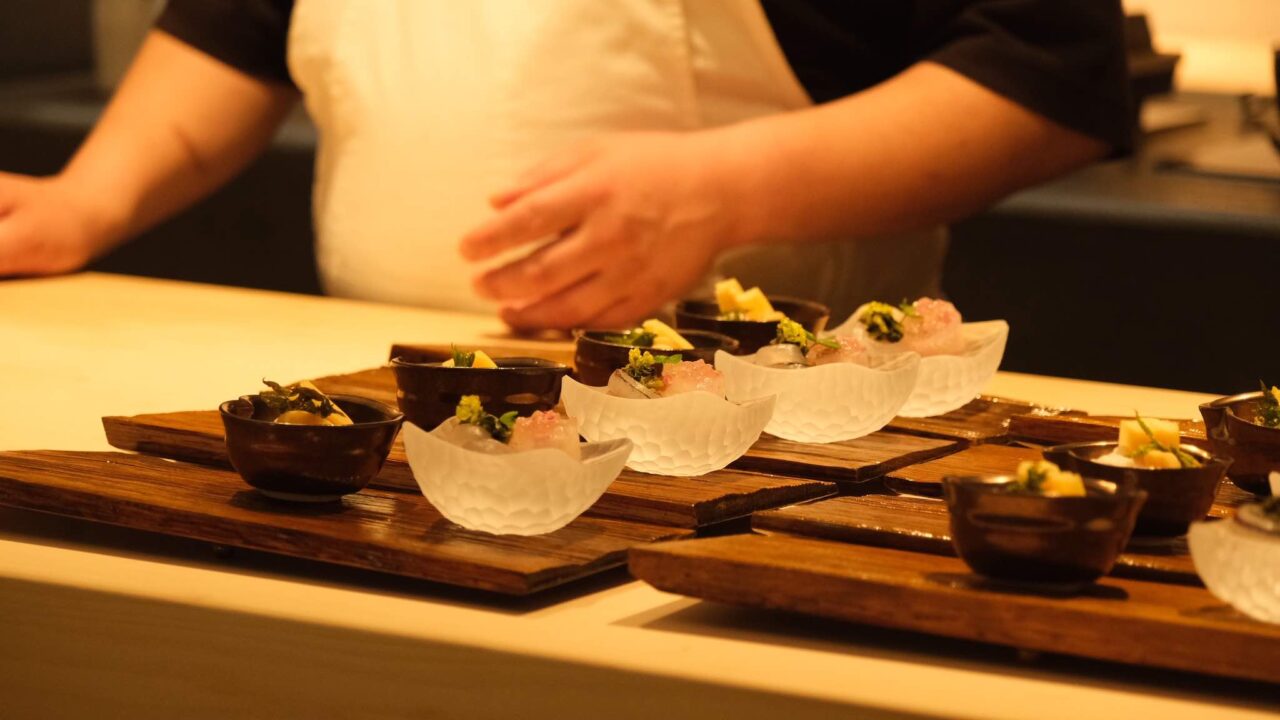
The unique culinary traditions of Noto are specific to the locale, such as the retention of the eggs of the fugu fish — regarded as the most dangerous and poisonous section — and fermenting it for three years in nukazuke rice bran. The three year duration matures the eggs and removes any poison, allowing it to be digestible. Typically the meat of the fish is more prized and sold to central culinary cities in Japan. Utilised for its protein, this reflected the backbone of Noto culture, where nothing was wasted.
To showcase the complexity of the fermented eggs, chef Ishii presented a dollop of the three-year fermented eggs atop a serving of yumepirika Hokkaido rice, cooked in a ceramic kama pot with hot — not cold — water, a technique more commonly used for traditional tea ceremonies. The hot water imparts a steam that allows the grain to retain its shape, ‘al dente’. The result was a pure and direct presentation of the rare fermented ingredient.
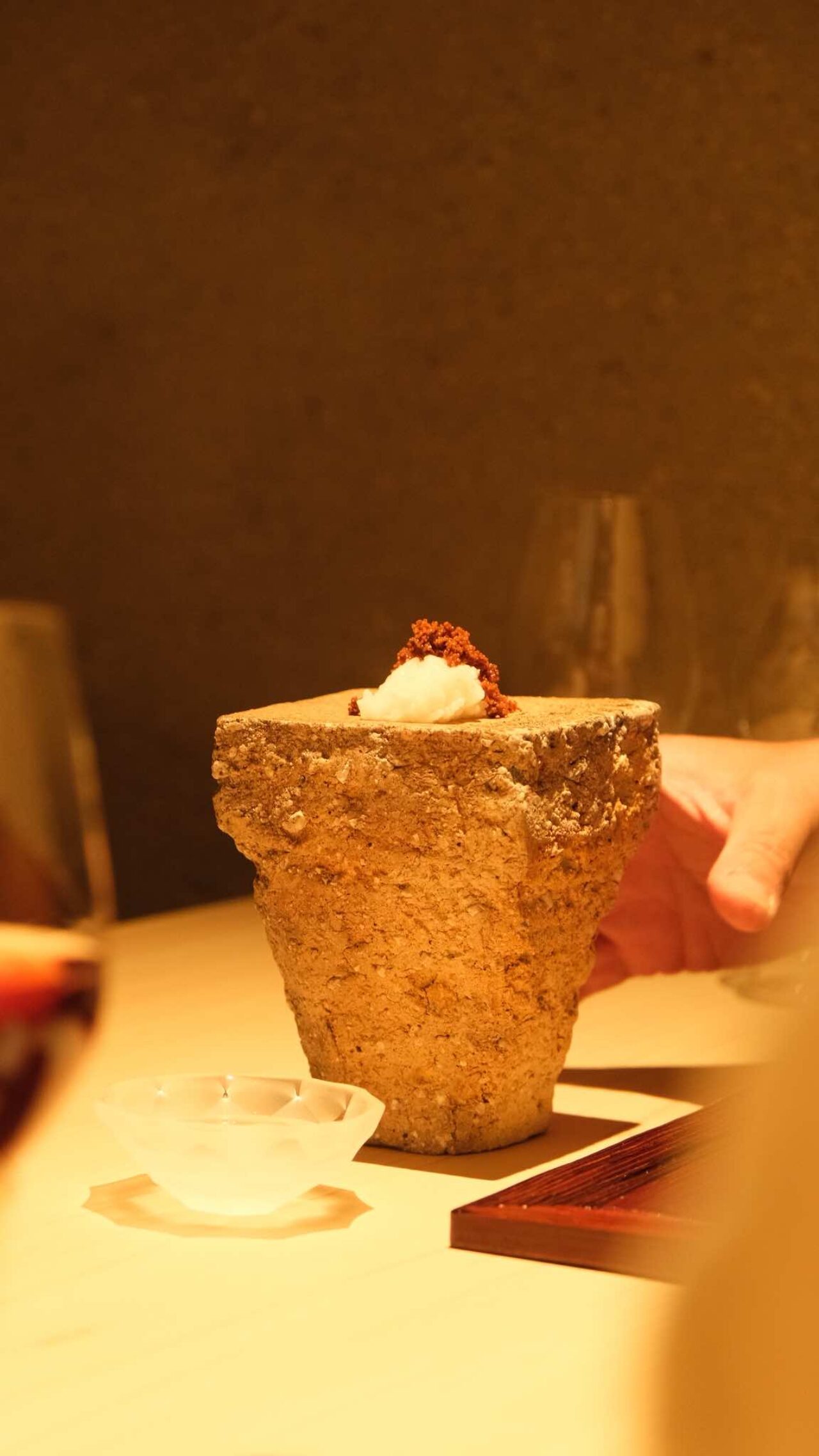
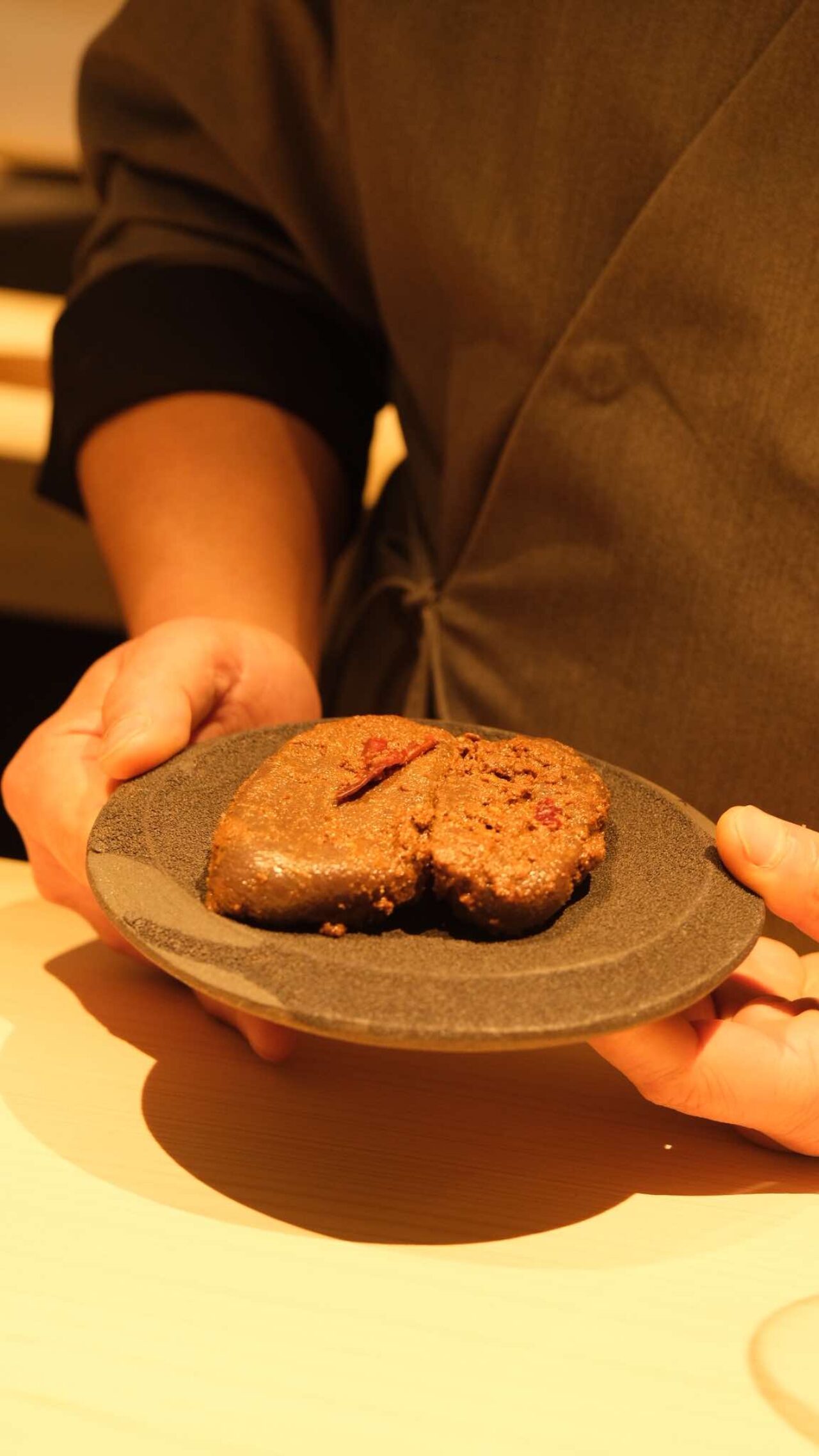
Simple yet elevated — each dish balanced a suitable complexity when necessary. Exampled in the beautifully-presented dish comprised of a base of mink whale from Noto mixed with Japanese pickle, with a layer of individually-plucked citrus kernels coated with a delicate oil from the dankobai tree, a sibling of the aromatic kuromoji tree. Whilst figs are the more commonly-famed fruit in the colder climate of Noto, the currently-in-season hassaku orange was used. The laboriously-prepared dish took one hour and 8 individuals to create.
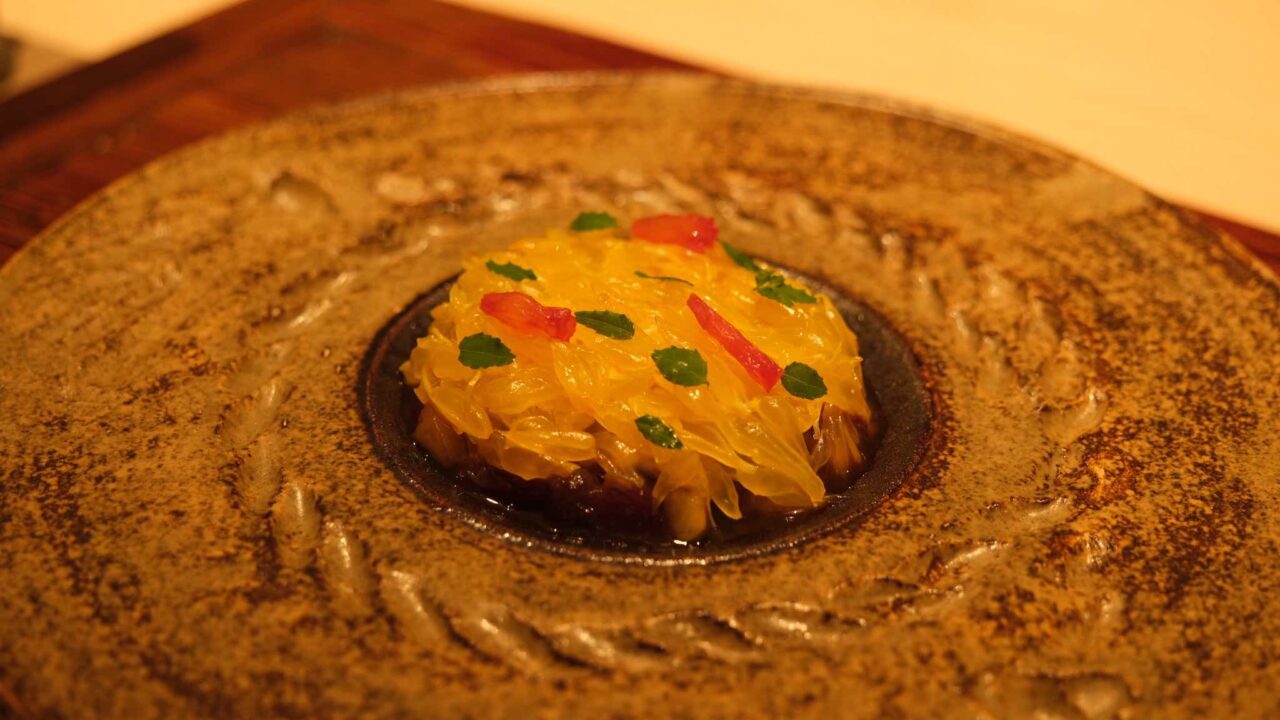
A stand-out dish was the delicate and fragrant shin tamanegi (new onion) consommé soup, presented in a stunning Wajima-nuri lacquered wooden bowl, crafted by esteemed lacquer artisan Akito Akagi. Inside, a perfect Noto-kaki Pacific Oyster, grown in a very cold and clean ocean due to intersecting currents from the south and a cold current from the North, served with turkey ravioli and pickled ashitaba (tomorrow’s leaf) with a delicate dash of aromatic sansho (Japanese pepper) oil.
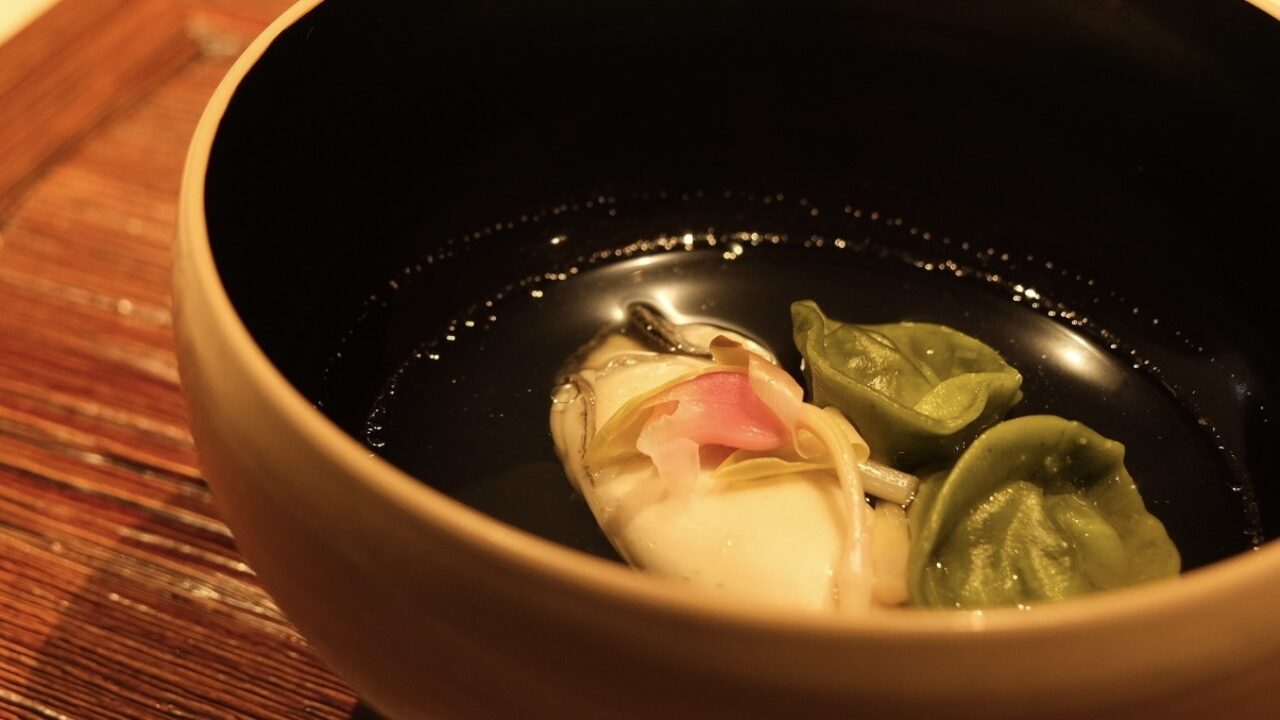
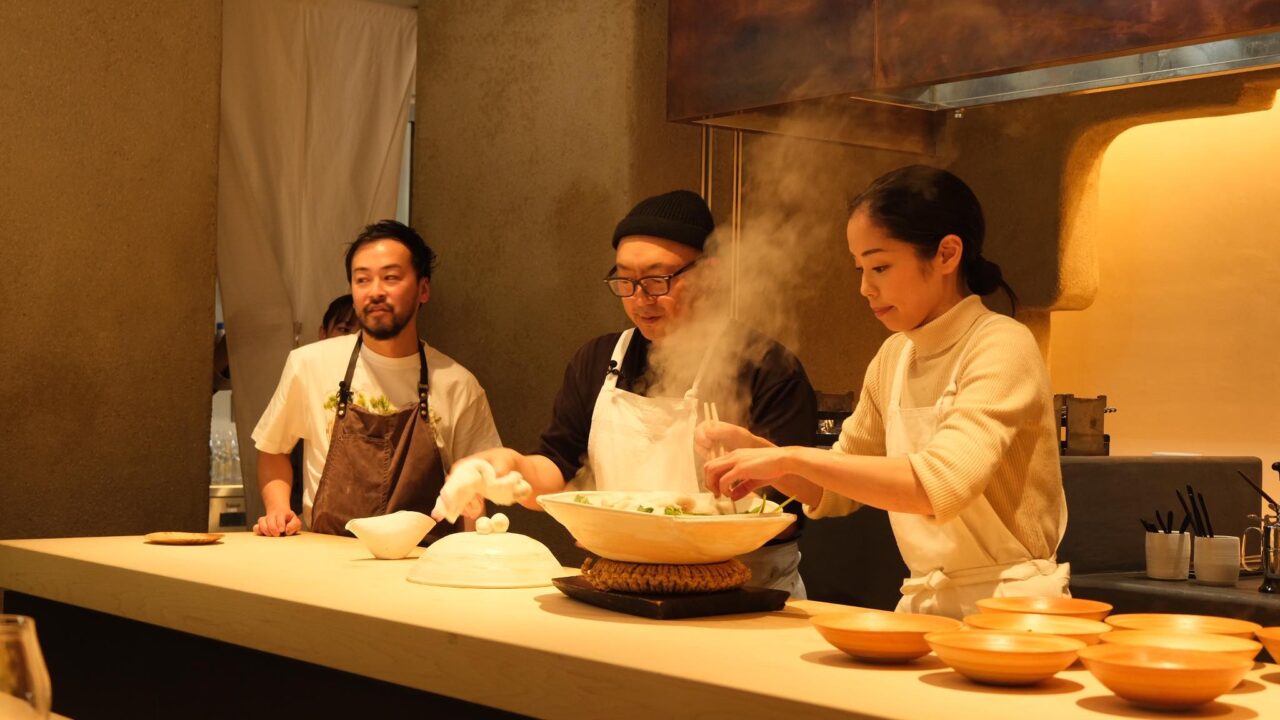
One of the main dishes featured a Noto-raised serving of turkey, referred to as shichimencho in Japanese, grilled over charcoal and served alongside fukinoto (wild spring plant) miso, pickled wild wasabi leaf and shiitake mushroom with young sansai (wild plant) shoots served with a drizzle of unfertilised egg yolk.
The second-to-last-dish was simply a dollop of frozen d’acquoise fresh cream alongside a cluster of Noto-grown Nakajimacho Hakuingen white bean with doburoku-marinated strawberries. It perfectly exampled mamoru wo sozai — to protect the integrity of the ingredients.
Auberge TOKITO’s former sommelier Moichiro Horiuchi returned exclusively for the collaborative event and brought together an excellent offering of alcohol pairings for the course, each bottle sharing a connection to Noto or a connection to a natural devastation. The line-up included NOTO JIN, QINO soda and Japanese nihonshu sake brewed in Noto. Whilst a Junmai Daiginjo from Heavensake, produced by Niizawa Brewery in Iwate, was selected due to Niizawa’s strong support and assistance for Noto post-quake. Meanwhile a vintage from Germany, a 2021 Sonnenberg Spätburgunder from Meyer-Näkel, was chosen for the year the small German town was also incomprehensibly damaged by flooding in the same year.
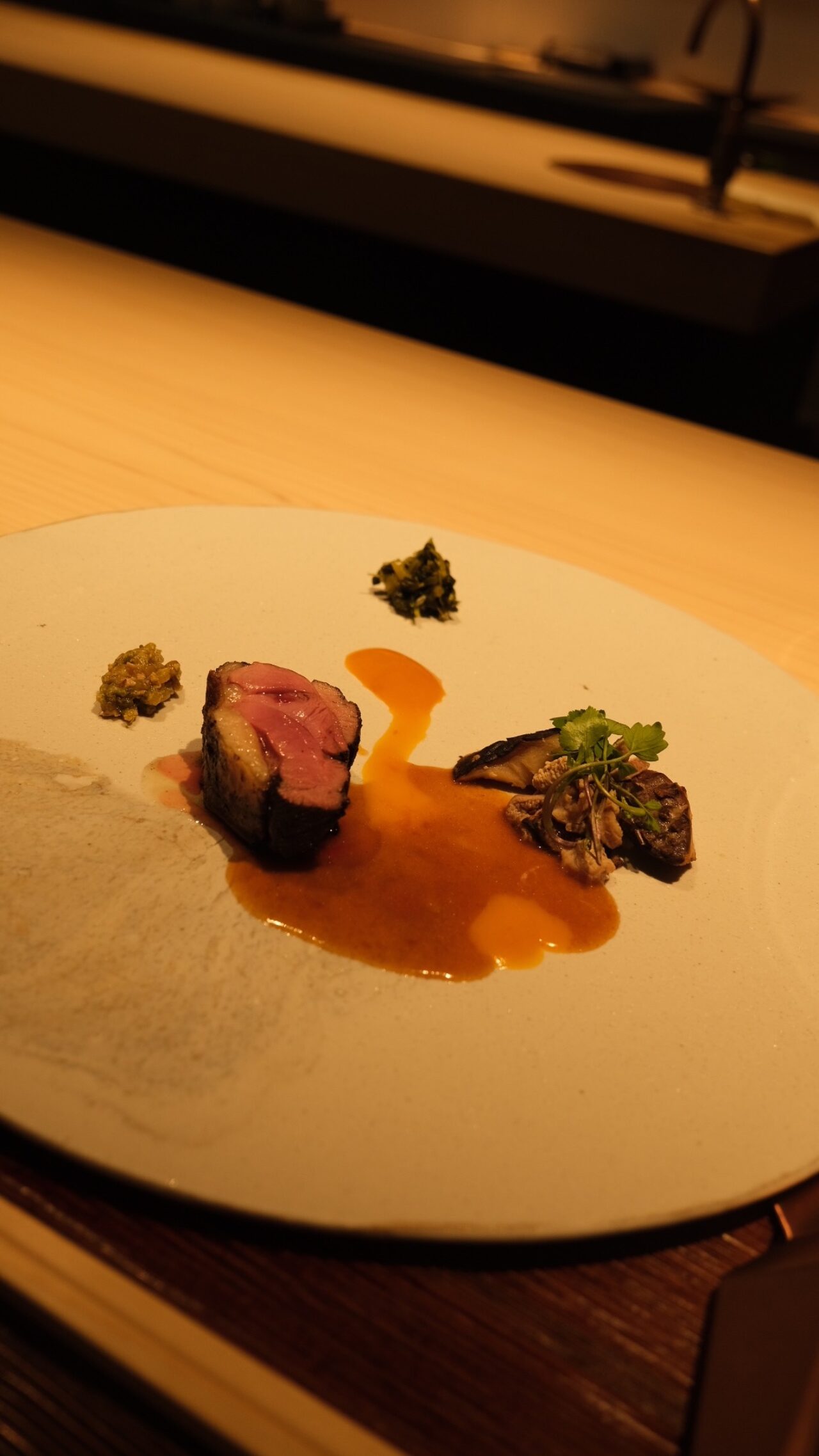
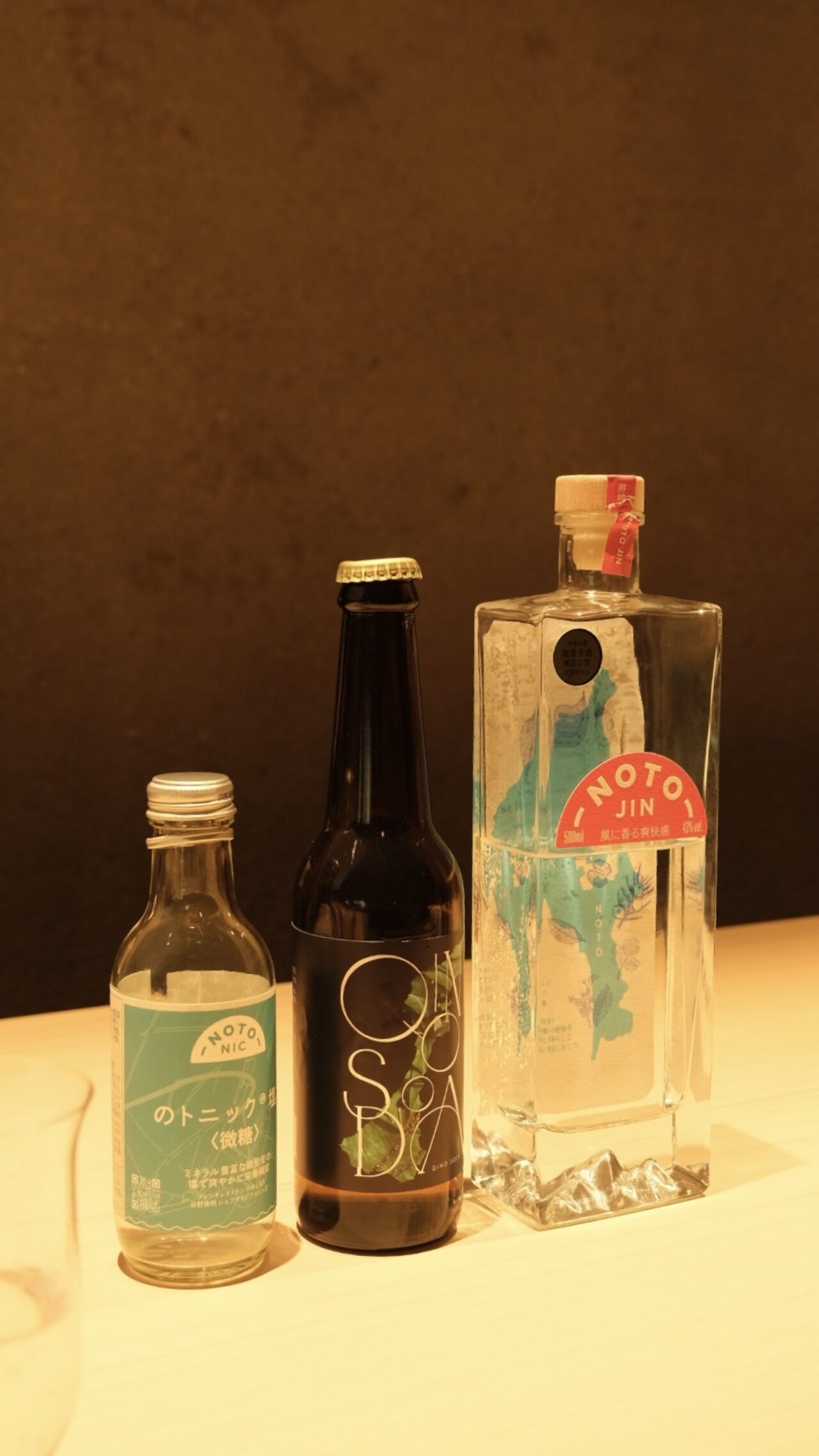
For the finale, Auberge TOKITO’s Executive Pastry Chef Kanako Kuroiwa’s exquisite desserts included a mesmerising artistic foray presented on Bizen artist Kazuya Ishida’s undulating sculptural plate, with a bite-sized stick of lemon mousse and a series of mignardises and petite fours crafted with Noto salt, Kaga boucha tea, cherry blossoms, blood orange and sumi charcoal.
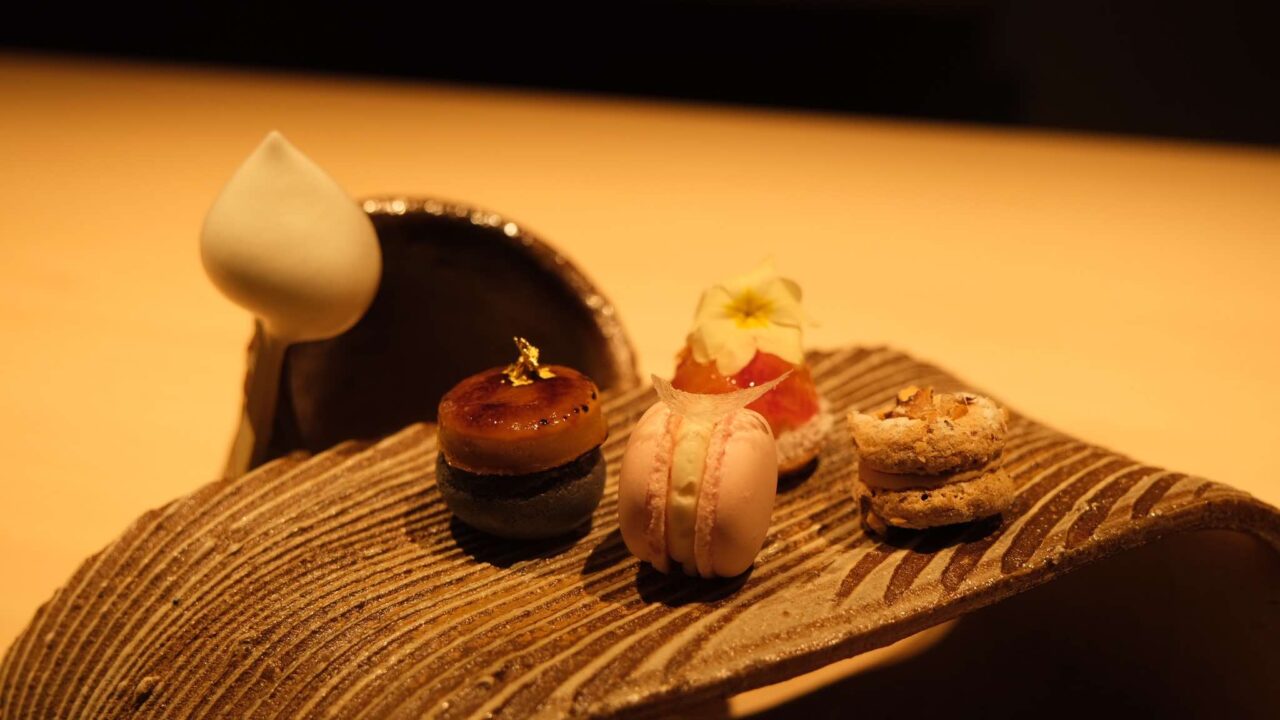
‘Surrounded by beautiful nature, Noto is a treasure trove of ingredients,’ explains chef Ishii after his visit to Noto in Japan’s Ishikawa prefecture. ‘The Noto experience that I had the other day was beyond my imagination.’ Entitled HERE. NOW., they explore the future of Noto, connecting through the power of ‘food’. ‘Through this event, we hope to convey Noto’s nature, ingredients, and climate, and to encourage as many people as possible to visit Noto.’
AUBERGE TOKITO
1 Chome-24-26 Nishikicho, Tachikawa,
Tokyo 190-0022
For more Japan dining destinations, click here
Images: Champ Creative ©
Text: Editor-in-Chief Joanna Kawecki



